
Japanese Festival Calendar: Upcoming Yearly Highlights

Fuji Shibazakura Festival (富士芝桜まつり)
Fuji Shibazakura Festival (富士芝桜まつり)
Time: Mid April to Late May
Prefecture: Yamanashi
Location: Fuji Motosuko Resort
The Fuji Shibazakura Festival takes place annually between April and May, marking the arrival of moss phlox blooms and celebrating the vibrant colors of spring. Its strategic location near Mt. Fuji and other attractions around Kawaguchiko makes it a compelling choice for both tourists and locals alike.

Kurayami Festival (くらやみ祭)
Kurayami Festival (くらやみ祭)
Time: Late April - Early May
Prefecture: Tokyo
Location: Okunitama Shrine
The Kurayami Matsuri, or Darkness Festival, is an extraordinary annual event in Fuchu City, Tokyo. Regarded as one of the oldest festivals in the Kanto region, it is truly unique in all of Japan. This festival takes place every April 30th to May 6th at Okunitama Shrine, and true to its name, it unfolds during the night. Throughout the week, festivities include floats featuring men, women, and children adorned in traditional costumes, engaging in captivating dances along the streets. This distinctive celebration adds a touch of mystique to the cultural landscape.

Hakata Dontaku Festival (博多どんたく港まつり)
Hakata Dontaku Festival (博多どんたく港まつり)
Time: May 3 - 4
Prefecture: Fukuoka
Location: Kushida Shrine
The Dontaku Festival, held annually in Fukuoka on May 3 and 4, is among the most widely attended festivals in Japan and is particularly popular during the Golden Week holiday.
Over the course of the two-day celebration featuring dances and processions, an estimated 2 million people enthusiastically cheer on the participants.

Hamamatsu Festival (浜松まつり)
Hamamatsu Festival (浜松まつり)
Time: May 3 - May 5
Prefecture: Shizuoka
Location: Hamamatsu Station
The Hamamatsu Festival, celebrating the birth of children and coinciding with the annual Children’s Day on May 5, is a vibrant event with two distinct parts.
Firstly, there is a procession featuring floats resembling small temples, each carrying musicians. This procession showcases the rich cultural heritage of the region and contributes to the festive atmosphere.
Secondly, the festival includes a massive kite-flying competition, where each neighborhood competes with their own giant kite. This adds an exciting and competitive element to the celebration, making the Hamamatsu Festival a lively and unique experience.

Shinkawa Market Matsuri (新川市まつり)
Shinkawa Market Matsuri (新川市まつり)
Time: May 5
Prefecture: Yamaguchi
Location: Ube City, Yamaguchi central shopping street, Tokiwa Street entire area
Taking place during the traditional Golden Week holidays, the Shinkawa Market Festival in Ube city is a vibrant celebration showcasing the rich local traditions.
A notable feature of the event is the fox's wedding parade, where a charmingly attired "bride and groom," donning fox-painted faces, elegantly traverse the streets atop a rickshaw.

Kanda Matsuri (神田祭)
Kanda Matsuri (神田祭)
Time: Mid May
Prefecture: Tokyo
Location: Kanda Myojin Shrine
Gear up for the Kanda Festival (Kanda Matsuri), a major event that occurs once every two years. This two-day festival in mid-May presents distinct events on Saturday and Sunday, each deeply intertwined with the festival's rich history.

Sanja Festival (三社祭)
Sanja Festival (三社祭)
Time: Mid to Late May
Prefecture: Tokyo
Location: Asakusa Shrine, Sensōji Temple, Nakamise Shopping Street
The Sanja Matsuri is renowned as one of Tokyo's more spirited festivals, drawing around two million spectators. It features lively and occasionally tattooed participants engaging in what can be aptly described as "mikoshi jousting." While in other festivals mikoshi bearers may bounce the heavy portable shrine, at Sanja Matsuri, participants don fundoshi (loin cloth) attire, riding atop the mikoshi and attempting to knock off opponents, despite it being strictly prohibited.
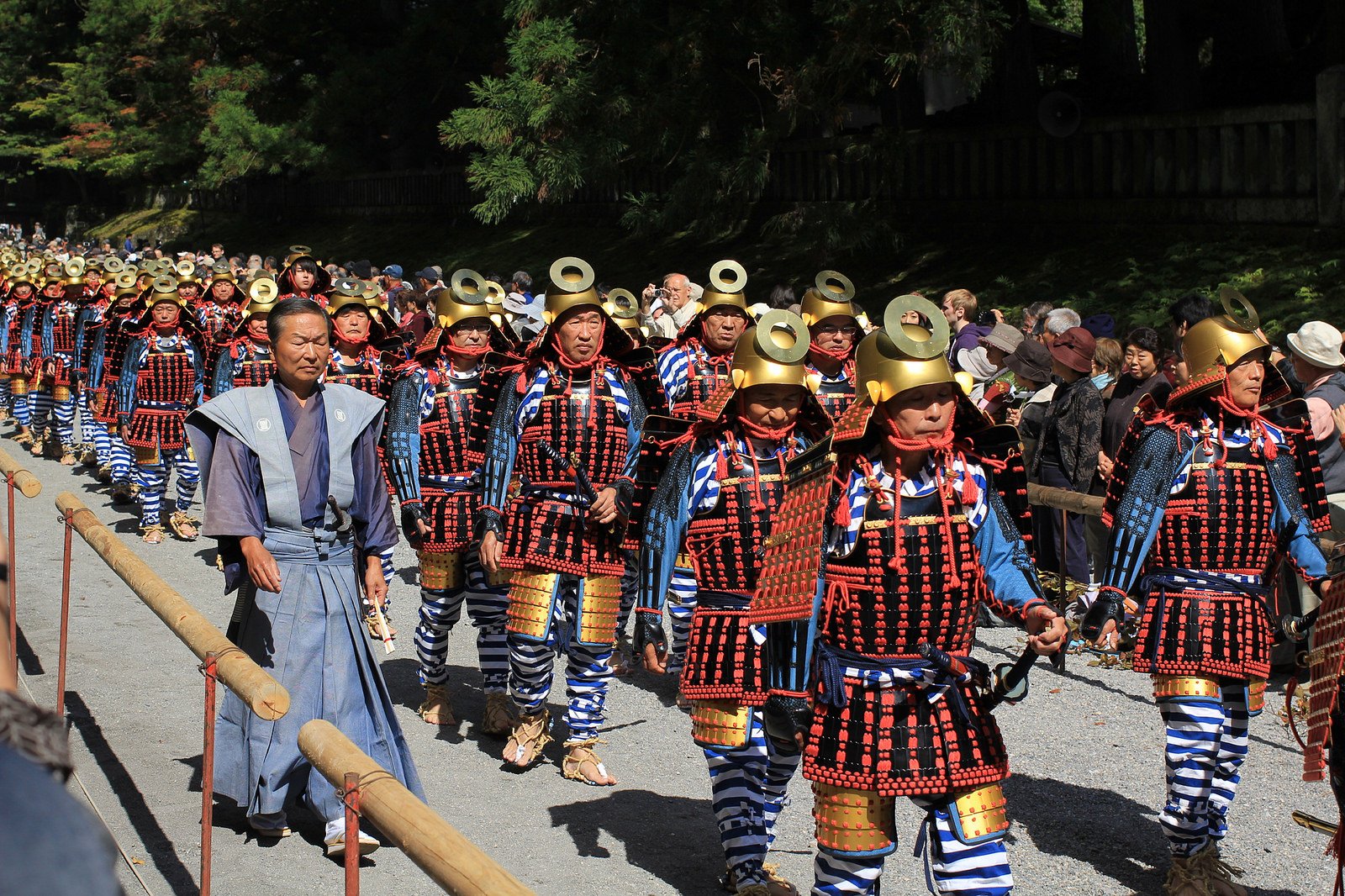
Togyo-sai "1,000 Samurai Procession"(渡御祭「百物揃千人武者行列」)
Togyo-sai "1,000 Samurai Procession"(渡御祭「百物揃千人武者行列」)
Time: Mid May
Prefecture: Tochigi
Location: Nikko Toshogu Shrine
The annual 1,000 Samurai Procession, locally known as Hyakumonozoroe Sennin Gyoretsu, takes place at Toshogu Shrine in Nikko. Recognized as a World Heritage site since 1999, this event draws thousands of locals who assemble at Toshogu to participate in a grand parade adorned in Nikko's traditional warrior attire.
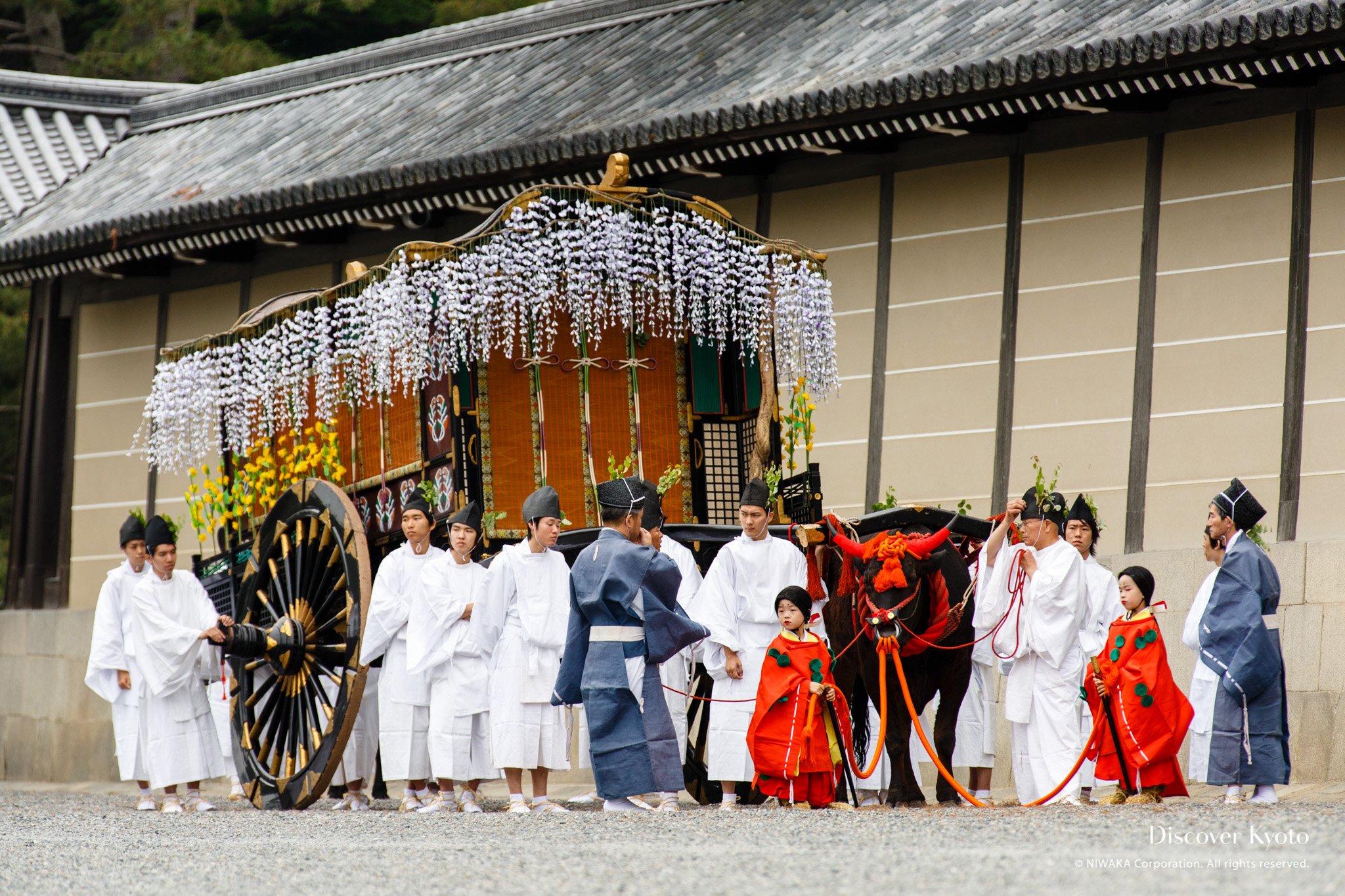
Aoi Matsuri (葵祭)
Aoi Matsuri (葵祭)
Time: May 15
Prefecture: Kyoto
Location: Kamigamo Shrine
The festival ranks among Kyoto's three most renowned festivals, alongside the Gion Matsuri and Jidai Matsuri. The festival's centerpiece is a grand parade featuring more than 500 participants attired in the aristocratic fashion of the Heian Period (794-1185). They march from the Imperial Palace to the Kamo Shrines. The festival derives its name from "Aoi," which means Hollyhock in Japanese, in reference to the Hollyhock leaves worn by the procession members.

Shibuya Ohara Matsuri (渋谷・鹿児島おはら祭)
Shibuya Ohara Matsuri (渋谷・鹿児島おはら祭)
Time: Late May
Prefecture: Tokyo
Location: Around Shibuya Station
Adopting elements from Kagoshima Prefecture, the Shibuya Kagoshima Ohara Festival showcases a variety of foods and delicacies from the Satsuma domain. The festival is marked by a lively parade along Dogenzaka Dōri, featuring captivating performances such as taiko drumming, marching troupes, and a multitude of traditional dancers elegantly clad in kimono attire.

Soma Nomai Matsuri (相馬野馬追)
Soma Nomai Matsuri (相馬野馬追)
Time: May 25-27
Prefecture: Fukushima
Location: Hibarigahara Festival Site
Soma Nomaoi traces its origins back over a millennium to the Minamisoma region. It evolved from the historical practice of training horses in open fields as a crucial aspect of military drills, along with the ceremonial capture of wild horses. Those horses captured during this ritual were honored with an almost divine status, being kept at the local shrine.

Mifune Matsuri (三船祭)
Mifune Matsuri (三船祭)
Time: Late May
Prefecture: Kyoto
Location: Arashiyama Park
Annually occurring on the third Sunday of May, the Mifune Festival is hosted along the Katsura River in Arashiyama. This cultural event highlights traditional boats adorned with musicians and performers, gracefully drifting down the river. Aptly named the "Three Boat Festival," it pays homage to the distinguished Gozabune, designed for transporting nobles, a dragon-headed boat, and the Gekishufune, colloquially known as the 'waterfowl neck boat.'
Notably, the Mifune Festival serves as an extension of the grand festivities of the Kurumazaki Shrine, enriching the cultural tapestry of this vibrant celebration.
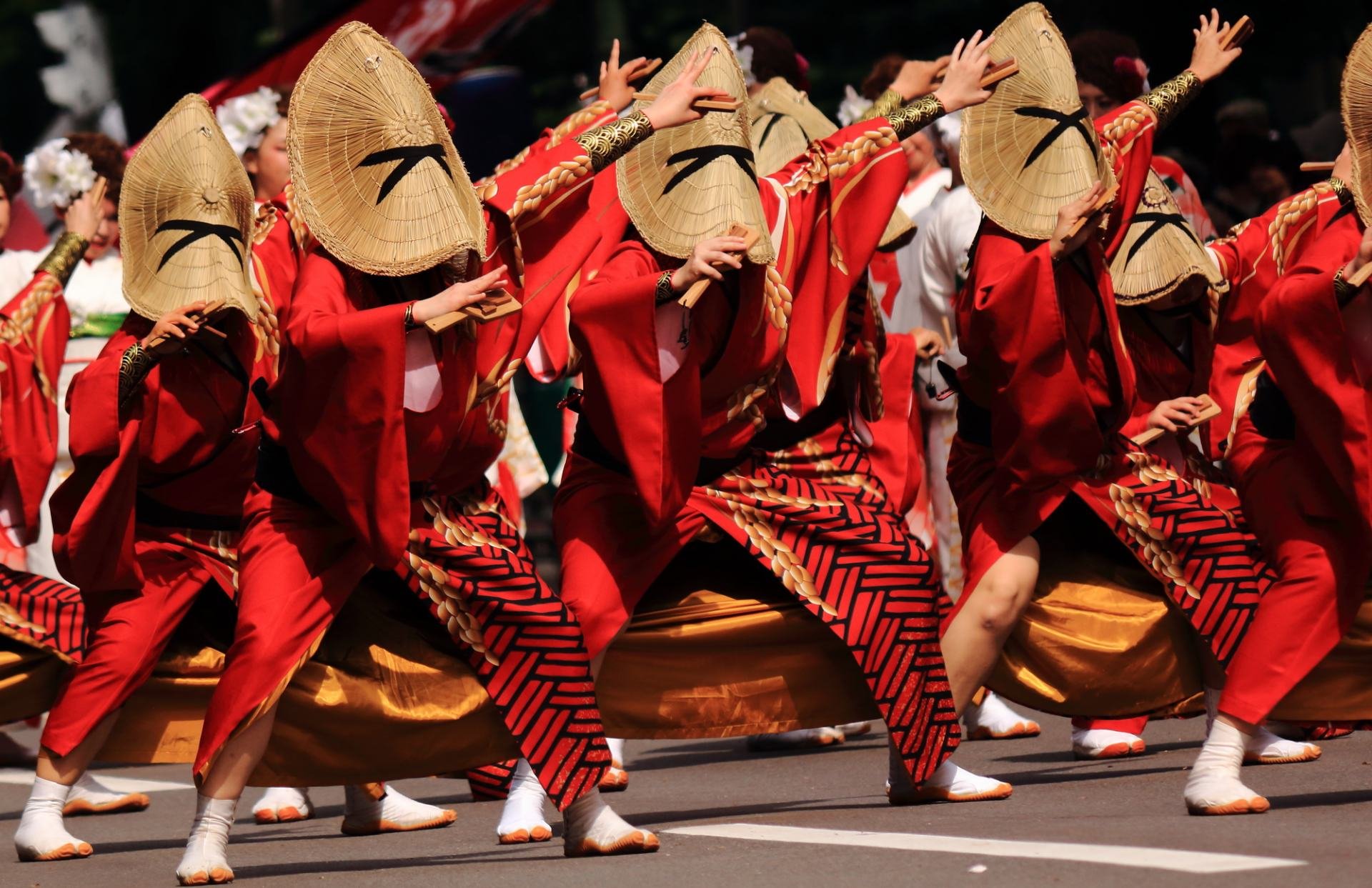
Yosakoi Soran Festival in Sapporo
Yosakoi Soran Festival in Sapporo (YOSAKOIソーラン祭り)
Time: Early to Mid June
Prefecture: Hokkaido
Location: Odori Park
Yosakoi is an exhilarating celebration of dance and enjoyment. Come and experience the energy of powerful and dynamic dance performances up close. If you're up for it, dive into the excitement and join the festivities!
In Odori Park and on specially arranged event stages throughout Sapporo City, prepare to witness a vibrant and lively showcase of the city's best dancing. Teams from across Hokkaido will compete, presenting thrilling dances that embody the spirited essence of this lively festival.

Tsukiji Lion Dance Festival (つきじ獅子祭)
Tsukiji Lion Dance Festival (つきじ獅子祭)
Time: Early - Mid June
Prefecture: Tokyo
Location: Namiyoke Shrine, Tsukiji
During the annual Tsukiji Lion Dance Festival at Namiyoke Shrine, the entire town of Tsukiji comes alive as the roads are closed off, and residents take to the streets in celebration.
What sets this festival apart from other mikoshi processions is the inclusion of giant lion heads carried alongside the shrines. These impressive lion heads add a unique and vibrant element to the event. Additionally, on Saturday, you can expect to see adorable shrines featuring popular Japanese children's characters on top, led by local kids. This infusion of tradition with a touch of contemporary charm distinguishes the Tsukiji Lion Dance Festival as a distinctive and memorable cultural celebration.
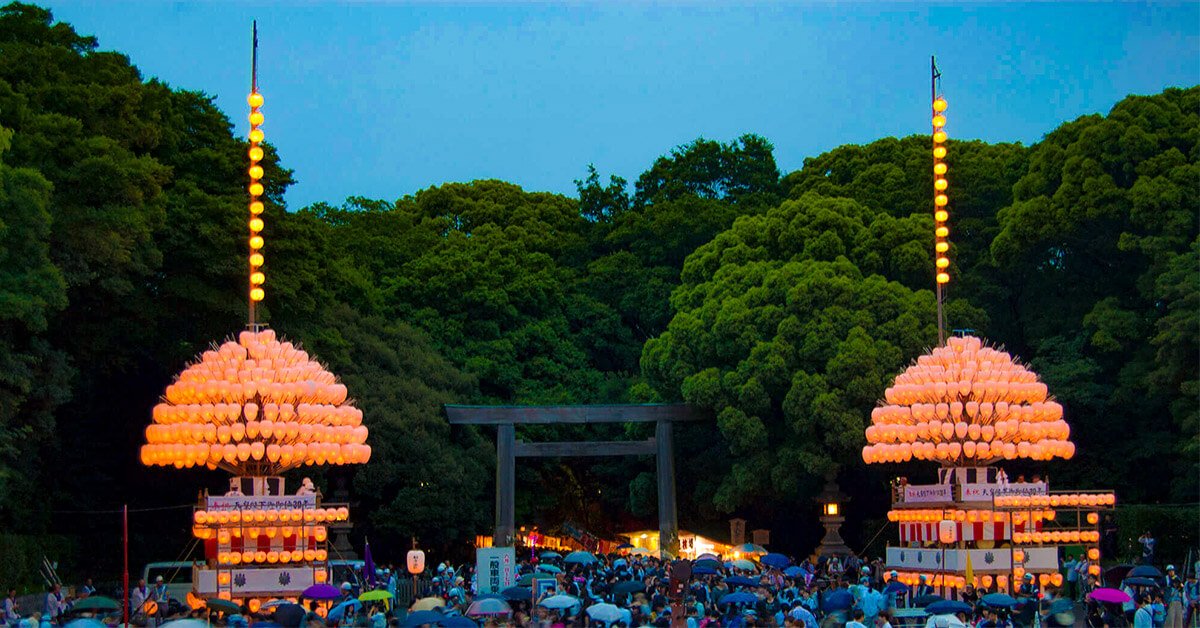
Atsuta Festival (熱田まつり)
Atsuta Festival (熱田まつり)
Time: June 5
Prefecture: Nagoya
Location: Atsuta Shrine
Among the approximately 70 festivals held each year at Atsuta Shrine, the Atsuta Festival (Atsuta Matsuri or Shobu-sai) stands out as the largest and most significant. Occurring every June 5th, it marks the arrival of summer. In Japan, summer is synonymous with festivals and fireworks, making this event a vibrant start to the season.

Sanno Festival (山王祭)
Sanno Festival (山王祭)
Time: June 7-17
Prefecture: Tokyo
Location: Hie Shrine
The Grand Parade of the Sanno Matsuri unfolds biennially in mid-June during even-numbered years. This event is a significant component of the Sanno Matsuri Festival, counted among Tokyo's three most renowned festivals. Alternating with the Kanda Matsuri, which occurs in odd-numbered years in May, the Sanno Matsuri Festival spans 11 days. Throughout this festival period, numerous smaller events take place, although details are typically available on a Japanese-only website. The focal point of the festivities is the impressive grand parade.

Hakata Gion Yamakasa Festival (博多祇園山笠)
Hakata Gion Yamakasa Festival (博多祇園山笠)
Time: July 1-15
Prefecture: Fukuoka
Location: Kushida Shrine
The festival reaches its zenith with a thrilling time trial race in the early morning of July 15. During this race, seven neighborhoods from Fukuoka's Hakata district engage in a competition to push elaborately adorned festival floats along a five-kilometer course through the city.
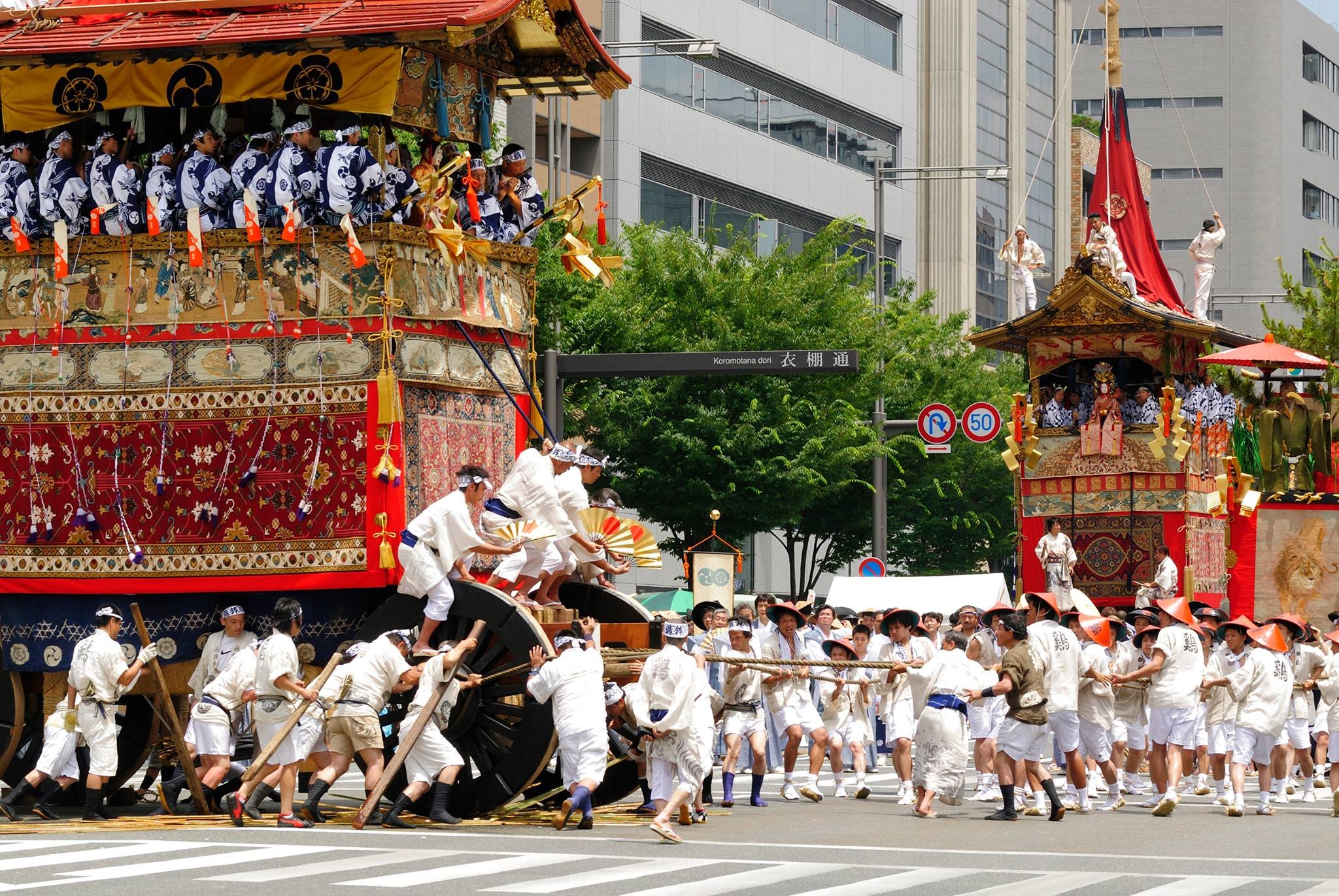
Gion Matsuri (祇園祭)
Gion Matsuri (祇園祭)
Time: The entire month of July
Prefecture: Kyoto
Location: Yasaka Shrine
Being Japan's most renowned festival, it encompasses numerous events, with the grand procession of floats (Yamaboko Junko) on July 17 being a spectacular highlight. Equally enjoyable are the festive evenings leading up to the procession (Yoiyama).
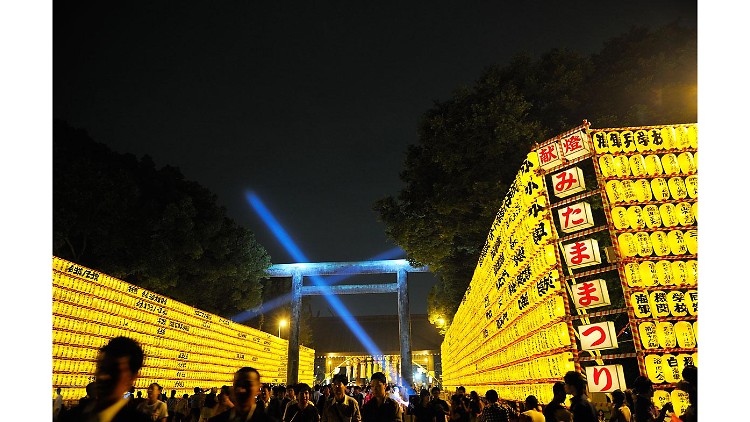
Mitama Matsuri (みたままつり)
Mitama Matsuri (みたままつり)
Time: Mid July
Prefecture: Tokyo
Location: Yasukuni Shrine
The Yasukuni Shrine is known for its rich history, purpose, and the intense political controversy that surrounds it. However, during a few nights each summer, many people set aside their political stances to partake in and enjoy the wonderful Mitama Festival.

Nachi Fire Festival (那智の扇祭り)
Nachi Fire Festival (那智の扇祭り)
Time: July 14
Prefecture: Wakayama
Location: Kumano Nachi Taisha Shrine
The Nachi Fire Festival (那智の扇祭り, Nachi no Ogi Matsuri), also known as the "Nachi Fan Festival," is one of Japan's three major fire festivals. Occurring on July 14 each year in the Kumano mountains of Wakayama Prefecture, the festival is centered around Kumano Nachi Taisha Shrine. It commemorates the return of the deity residing in the shrine to the Great Waterfall of Nachi (Nachi no Taki), Japan’s highest waterfall at 133 meters.

Hamaorisai Festival (浜織祭)
Hamaorisai Festival (浜織祭)
Time: July 15
Prefecture: Kanagawa
Location: Nishihama Beach
The Hamaori-sai stands as a noteworthy example, acknowledged as an Intangible Folk Cultural Heritage. This annual event unfolds at dawn on Marine Day, also known as "Sea Day."
Over 40 mikoshi (palanquin shrines), each showcasing distinct styles and some weighing over 500 kg, converge from Chigasaki and Samukawa to Nishihama beach. Here, they undergo a ceremonial purification ritual within the sea.
In the lead-up weekend, various shrines make preparations, culminating in the final midnight when the resonant chants of "Dokkoi, dokkoi" echo through the air, harmoniously yelled by the mikoshi carriers.

Owari Tsushima Tenno Festival (尾張津島天王祭)
Owari Tsushima Tenno Festival (尾張津島天王祭)
Time: Late July
Prefecture: Aichi
Location: Tennogawa Park, Tsushima
For over 500 years, on every scorching summer evening, the residents of Tsushima in Aichi Prefecture gather along the Tenno River. It's not necessarily cooler by the riverside on the fourth Saturday of July, but that's when the Tsushima Tenno Festival unfolds, one of the three major river festivals in Japan and nationally renowned. The Tenno Festival, believed to have been a favorite of the local warlord Oda Nobunaga, holds the status of a Nationally Intangible Folk Cultural Asset today.

Hachinohe Sansha Taisai (八戸三社大祭)
Hachinohe Sansha Taisai (八戸三社大祭)
Time: Late July - Early August
Prefecture: Aomori
Location: Hachinohe City Hall
The Hachinohe Sansha Taisai is an annual event held from July 31st to August 4th, recognized as one of Japan's Important Intangible Folk Cultural Properties. With a history spanning over 300 years, this summer festival is a significant and culturally rich event that shouldn't be missed if you're in the area.

Fuji Rock Festival (フジロックフェスティバル)
Fuji Rock Festival (フジロックフェスティバル)
Time: Late July
Prefecture: Niigata
Location: Naeba Ski Resort
Fuji Rock is the largest music festival in Japan, drawing between 100,000 and 150,000 people in normal years. Located in the picturesque Naeba Ski Resort, about a 90-minute train ride from Tokyo, the festival has been running since 1997, with its international attendance steadily growing.
Primarily held outdoors, featuring only one indoor stage, attendees must be prepared for both rain and shine. With its Japanese essence, Fuji Rock offers hot springs for soaking and nature walks, providing a bit of a Glastonbury vibe, including the possibility of stumbling upon secret woodland gigs. It's a festival that encourages exploration and embraces both music and nature.

Shinjuku Eisa Festival (新宿 エイサ祭)
Shinjuku Eisa Festival (新宿 エイサ祭)
Time: Late July
Prefecture: Tokyo
Location: Shinjuku Station East Exit
Eisa, a traditional dance style originating in the Okinawan islands, takes center stage each year in early August during the Okinawa Zento Eisa Matsuri, attracting hundreds of thousands of spectators. For those unable to visit Okinawa, the Shinjuku Eisa Festival provides a fantastic opportunity to immerse oneself in this vibrant aspect of the region's cultural heritage. This festival, running for nearly 20 years, brings a taste of Okinawa's rich culture to Shinjuku.

Tenjin Festival (天神祭)
Tenjin Festival (天神祭)
Time: July 24-25
Prefecture: Osaka
Location: Tenmangu Shrine
Originating in the 10th century, this festival is one of Japan's premier festivals, ranking alongside Kyoto's Gion Matsuri and Tokyo's Kanda Matsuri. The celebration commenced in the 10th century and currently occurs annually on July 24th and 25th. The primary festivities occur on July 25 and feature a terrestrial procession and a river procession, accompanied by a stunning display of fireworks.

Sumidagawa Fireworks Festival (隅田川花火大会)
Sumidagawa Fireworks Festival (隅田川花火大会)
Time: Late July
Prefecture: Tokyo
Location: Taito Riverside Sports Center
This stands as Tokyo's premier summer fireworks extravaganza. The Sumida River Fireworks show commences at 7 p.m. and extends for an impressive 90 minutes, drawing enormous crowds. Be sure to refer to our guide for navigating and enjoying the Sumidagawa Fireworks Festival.

Nagaoka Fireworks Festival (長岡まつり大花火大会)
Nagaoka Fireworks Festival (長岡まつり大花火大会)
Time: August 1-3
Prefecture: Niigata
Location: Shinano River
Taking place annually from August 1 to 3 along the Shinano River in Nagaoka City, the Nagaoka Festival unfolds its festivities. The inaugural day is dedicated to a peace ceremony, while August 2 to 3 features vibrant firework displays. Central to the festival are the daytime attractions, including portable shrine float parades and folk dance processions. As night falls on the last two days, the event crescendos with spectacular large-scale fireworks exhibitions.

Morioka Sansa Odori (盛岡さんさ踊り)
Morioka Sansa Odori (盛岡さんさ踊り)
Time: Early August
Prefecture: Iwate
Location: Chuodori Street
The highlight of the festival is a colossal parade featuring over three thousand drummers, each representing taiko groups affiliated with schools, companies, organizations, and the twenty-plus taiko groups based in Morioka. This gathering of drummers playing simultaneously sets a world record. The performers march in continuous lines, occasionally interrupted by parade floats or banners introducing the next segment of the event.

Goshogawara Tachineputa Festival (立佞武多祭り)
Goshogawara Tachineputa Festival (立佞武多祭り)
Time: Early August
Prefecture: Aomori
Location: Central Goshogawara City
While Aomori prefecture is renowned for being Japan's largest apple producer, it undergoes a stunning transformation once a year during the Nebuta Festival in Aomori City. In nearby Goshogawara, the Tachineputa Festival, though less known, proves to be even more impressive and memorable. From a tourist's standpoint, this festival offers the advantage of being less crowded while maintaining the excitement. Conveniently located just an hour's drive away from Aomori City, Goshogawara makes it easy for visitors to plan a trip to experience both versions of Nebuta, as both festivals occur during the same week.

Edogawa Fireworks Festival (江戸川区花火大会)
Edogawa Fireworks Festival (江戸川区花火大会)
Time: Early August
Prefecture: Tokyo
Location: Edogawa River
This particular festival features two fireworks shows held simultaneously, with the Edo River running through the middle. On one side of the river is Ichikawa City, Chiba, and on the other side is Edogawa-ku, Tokyo. The friendly competition between both sides adds an extra layer of excitement to the event.
For the complete festival experience, attendees often dress in yukatas (summer cotton kimonos) and indulge in the diverse culinary offerings from the yatai stores (food stalls) along the riverbanks. This combination of stunning fireworks displays, traditional attire, and delicious street food makes the Edogawa Hanabi Taikai a memorable and festive occasion.

Hiroshima Peace Memorial Ceremony (広島平和記念式典)
Hiroshima Peace Memorial Ceremony (広島平和記念式典)
Time: Early August
Prefecture: Hiroshima
Location: Hiroshima Peace Memorial Park
August 6th holds great significance for the people of Hiroshima. While most businesses operate normally, school children are called into school for "peace education." Many locals and tourists alike gather in the central Peace Park on this day to reflect on lives lost and to express hope for a peaceful future. It's a solemn occasion that honors the memory of the atomic bombing of Hiroshima during World War II.
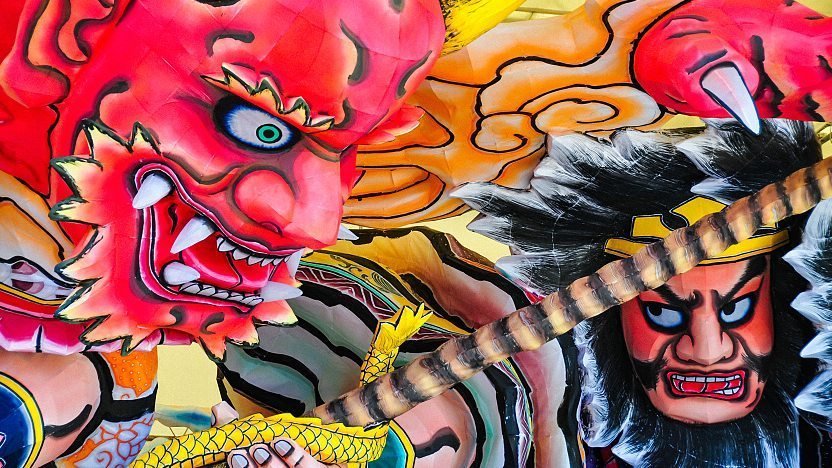
Nebuta Matsuri (ねぶた祭)
Nebuta Matsuri (ねぶた祭)
Time: August 2-7
Prefecture: Aomori
Location: The streets of Aomori City (Shinmachi-dori Street, Heiwa Koen-dori Street, National Route 4 and 7, Hakko-dori Street)
Nebuta and Neputa festivals are summer celebrations tied to Tanabata and are held in various towns across Aomori Prefecture. The most prominent among them is Aomori City's
The festival's main attraction is the daily procession of gigantic lantern floats, accompanied by sizable taiko drums, musicians, and dancers. The Nebuta Matsuri is one of the Tohoku Region's three major festivals, alongside Akita's Kanto Matsuri and Sendai's Tanabata.
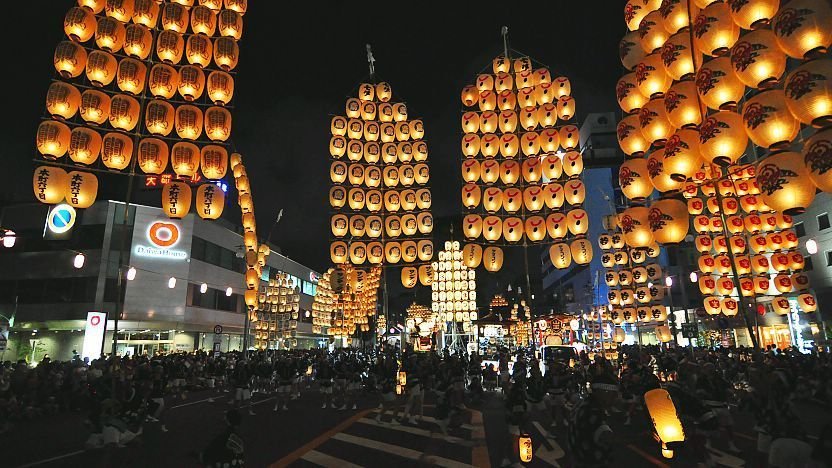
Kanto Matsuri (竿燈まつり)
Kanto Matsuri (竿燈まつり・ "pole lantern festival") - a Tanabata-related event
Time: August 3-6
Prefecture: Akita
Location: Kanto Odori
The festival's main attraction showcases remarkable feats of skill, as performers balance kanto, long bamboo poles adorned with arrays of paper lanterns attached to the ends. Alongside Aomori's Nebuta Festival and Sendai's Tanabata, the Kanto Matsuri is one of the three major festivals of the Tohoku Region.

Numata Tengu Festival (沼田まつり)
Numata Tengu Festival (沼田まつり)
Time: August 3 - 5
Prefecture: Gunma
Location: Streets of Numata
The Numata Tengu Festival (沼田まつり, Numata Matsuri) is a renowned celebration in Gunma Prefecture. Spanning three days, the festival features a lively procession of various portable shrines and floats, showcasing diverse shapes and sizes as they traverse the streets of Numata. What sets this festival apart is the Tengu Mikoshi—two shrines shaped like giant goblins, each weighing over 400 kilograms and exclusively pulled by women.

Gangara Fire Festival (がんがら火祭り)
Gangara Fire Festival (がんがら火祭り)
Time: August 4
Prefecture: Osaka
Location: Ikeda City Hall and Surroundings
Not for the faint of heart, the annual fire festival in Northern Osaka Prefecture has its origins dating back to 1644. The event kicks off with the lighting of the characters 大 (Dai) and 大一 (Daiichi) on Satsuki Mountain, resembling the Daimonji in Kyoto. Two enormous torches, standing at 4 meters high and weighing 100 kilograms each, are carried along a 3-kilometer route throughout the city. Caution is advised as the proximity to the intense fire can be quite close.
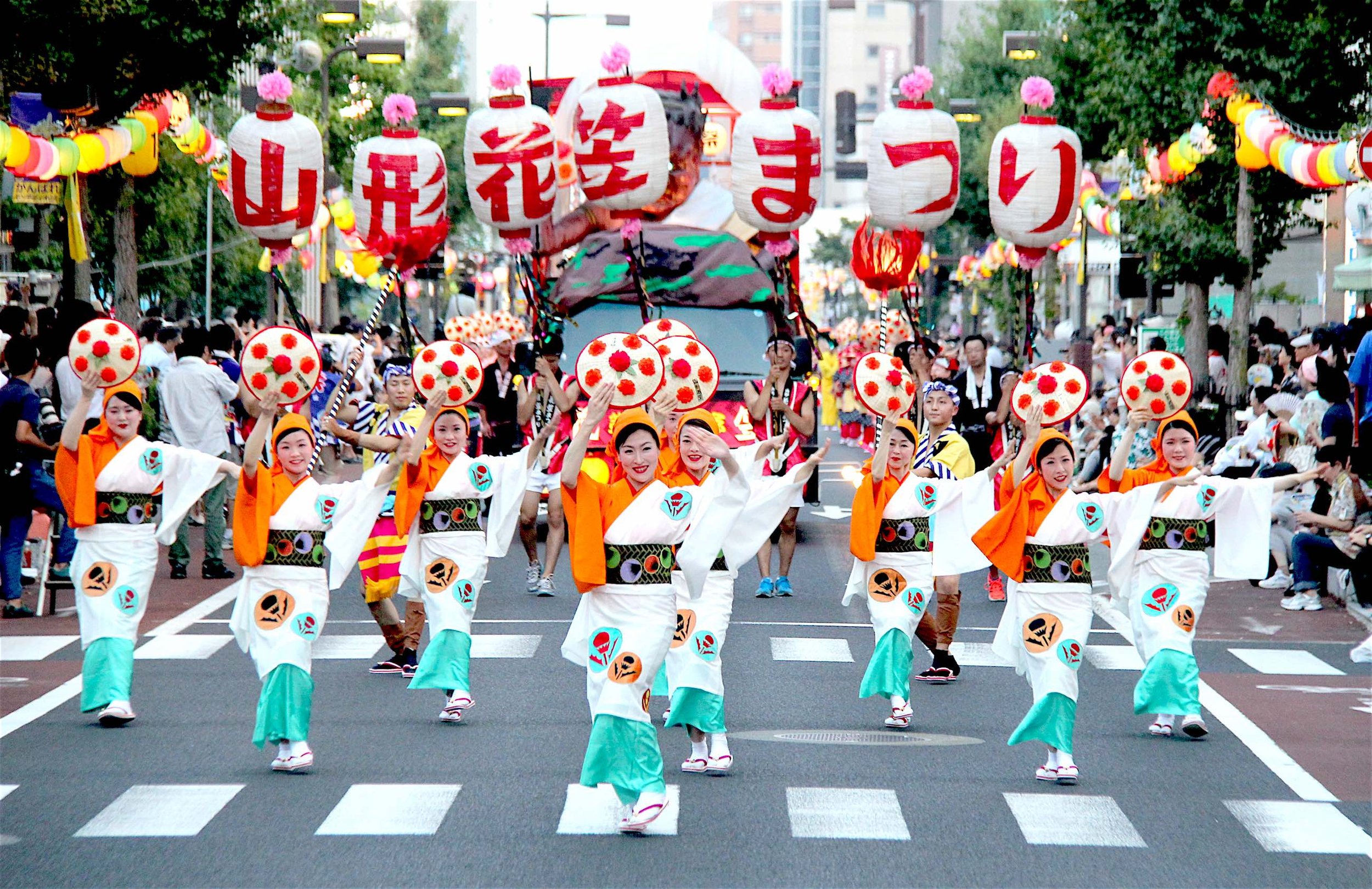
Yamagata Hanagasa Festival (花笠まつり)
Yamagata Hanagasa Festival (花笠まつり)
Time: August 5-7
Prefecture: Yamagata
Location: Yamagata
Commencing in 1963, the Yamagata Hanagasa Festival has evolved into a prominent event in Tohoku, drawing over a million visitors over its three-day duration. Central to the festival is the hanagasa, a hat adorned with red safflowers worn by performers engaging in traditional dances. The lively parade, featuring brightly decorated floats, comprises 100 groups, each approximately 100 members strong. As they traverse the main street of Yamagata City, echoes of "Yassho! Makasho!" fill the air—an homage to the calls of laborers during irrigation work on the outskirts of Yamagata Prefecture.

Sendai Tanabata Festival (仙台七夕まつり)
Sendai Tanabata Festival (仙台七夕まつり)
Time: August 6 - 8
Prefecture: Sendai
Location: Chichibu Shrine
Tanabata, translating to the '7th evening,' is a festival observed on various dates across Japan. Among these celebrations, the Sendai version holds particular prominence, hailed as one of the three major summer festivals in the Tōhoku region. In fact, the Sendai Tanabata Festival is so renowned that it has become synonymous with the city of Sendai itself, standing out as the most famous iteration of this traditional event.

Fukagawa Hachiman Matsuri (富岡八幡宮 例大祭)
Fukagawa Hachiman Matsuri (富岡八幡宮 例大祭)
Time: Mid Aug
Prefecture: Tokyo
Location: Tomioka Hachimangū Shrine
The Fukagawa Festival holds a distinguished status as one of Tokyo's three prominent Shintō festivals, alongside the Sanno Matsuri and the Kanda Matsuri.

Sanuki Takamatsu Festival (さぬき高松まつり)
Sanuki Takamatsu Festival (さぬき高松まつり)
Time: August 12-14
Prefecture: Kagawa
Location: Takamatsu Central Park, Sunport Takamatsu, and other locations
As one of Shikoku's renowned quartet of festivals, this event has become a summertime tradition cherished by both residents and visitors. The central venue for stage performances is Takamatsu Central Park, offering a focal point for the festivities. Additionally, the main street comes alive with vibrant so-odori dances, contributing to the lively and exhilarating summer nights in Takamatsu.

Awa Odori (阿波おどり)
Awa Odori (阿波おどり)
Time: August 12-15
Prefecture: Tokushima
Location: Tokushima Station Area
The festival is the most renowned among Japan's numerous dance festivals held during the mid-August Obon season. Awa was the previous name for Tokushima Prefecture, and Odori means dance. Thousands of spectators and dancers converge on Tokushima to witness this centuries-old "Fool's Dance." The nickname originates from the lyrics of a popular dance song: "Fools dance and fools watch, if both are fools, you might as well dance."

Sado Earth Celebration (アース・セレブレーション)
Sado Earth Celebration (アース・セレブレーション)
Time: Aug 16-18
Prefecture: Niigata
Location: Ogi town
Since 1988, the breathtaking natural beauty of Sado has provided the backdrop for Earth Celebration (EC), an international arts festival promoting an alternative global culture through collaborative musical and cultural endeavors with artists from across the globe. Developed by Kodo in collaboration with the inhabitants of Sado Island, EC holds the distinction of being Japan's longest-running music festival and has been recognized by the New York Times as "Japan's leading music event."

Kyoto Gozan no Okuribi (京都五山送り火)
Kyoto Gozan no Okuribi (京都五山送り火)
Time: August 16
Prefecture: Kyoto
Location: Daimonji, Daikokuten, Funa Nishigamo, Daihoku-San, Okita, and Mandara
Known locally as Daimonji, this celebration marks the pinnacle of the Obon festival in Kyoto, where the surrounding mountains are adorned with five blazing bonfires. Similar events unfold in other parts of Japan, including Nara and Hakone.
Three of these bonfires take on the shape of kanji characters, while the remaining two depict a boat and a Shintō gate. August 16, the day of the festival, holds significance as it is believed that deceased family members return from the spirit world for brief visits. Consequently, the festival is aptly named Okuribi, meaning "send-off fire."

Summer Sonic (サマーソニック)
Summer Sonic (サマーソニック)
Time: Mid Aug
Prefecture: Osaka
Location: Ookini Arena Maishima
The Summer Sonic Festival is a yearly music event that takes place over a single weekend in August, concurrently in Chiba and Osaka, Japan. The festival showcases a unified lineup performing on one day in Osaka, followed by a performance the next day in Chiba, and vice versa.
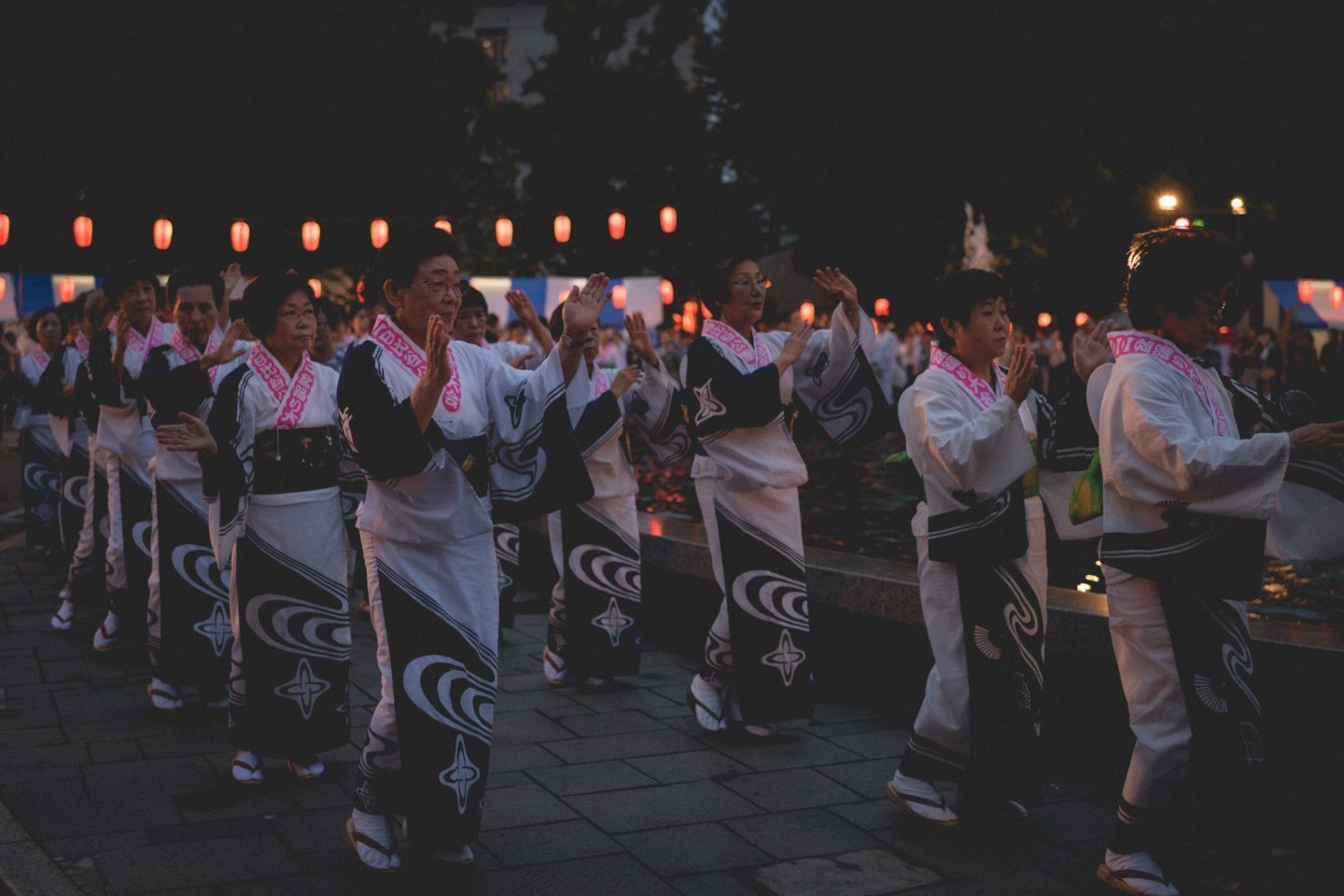
Hibiya Park Marunouchi Ondo Bon Odori Festival (日比谷公園丸の内音頭大盆踊り大会)
Hibiya Park Marunouchi Ondo Bon Odori Festival (日比谷公園丸の内音頭大盆踊り大会)
Time: Late August
Prefecture: Tokyo
Location: Hibiya Park
The Marunouchi Ondo Bon Odori Festival takes place at the central Hibiya Park and is one of Tokyo's most accessible and largest Bon Odori festivals.
During the event, a diverse array of participants, including employees from businesses in the Marunouchi area, local residents, and tourists (with an expected 40,000 participants), join in dancing circles around the central fountain to the rhythm of the "Marunouchi Ondo." This iconic dance, composed in 1932 by Yaso Saijo and Shinpei Nakayama, forms the basis of the renowned Bon Odori song, "Tokyo Ondo." The festival not only offers a lively and inclusive celebration but also pays homage to the rich cultural heritage of Tokyo.
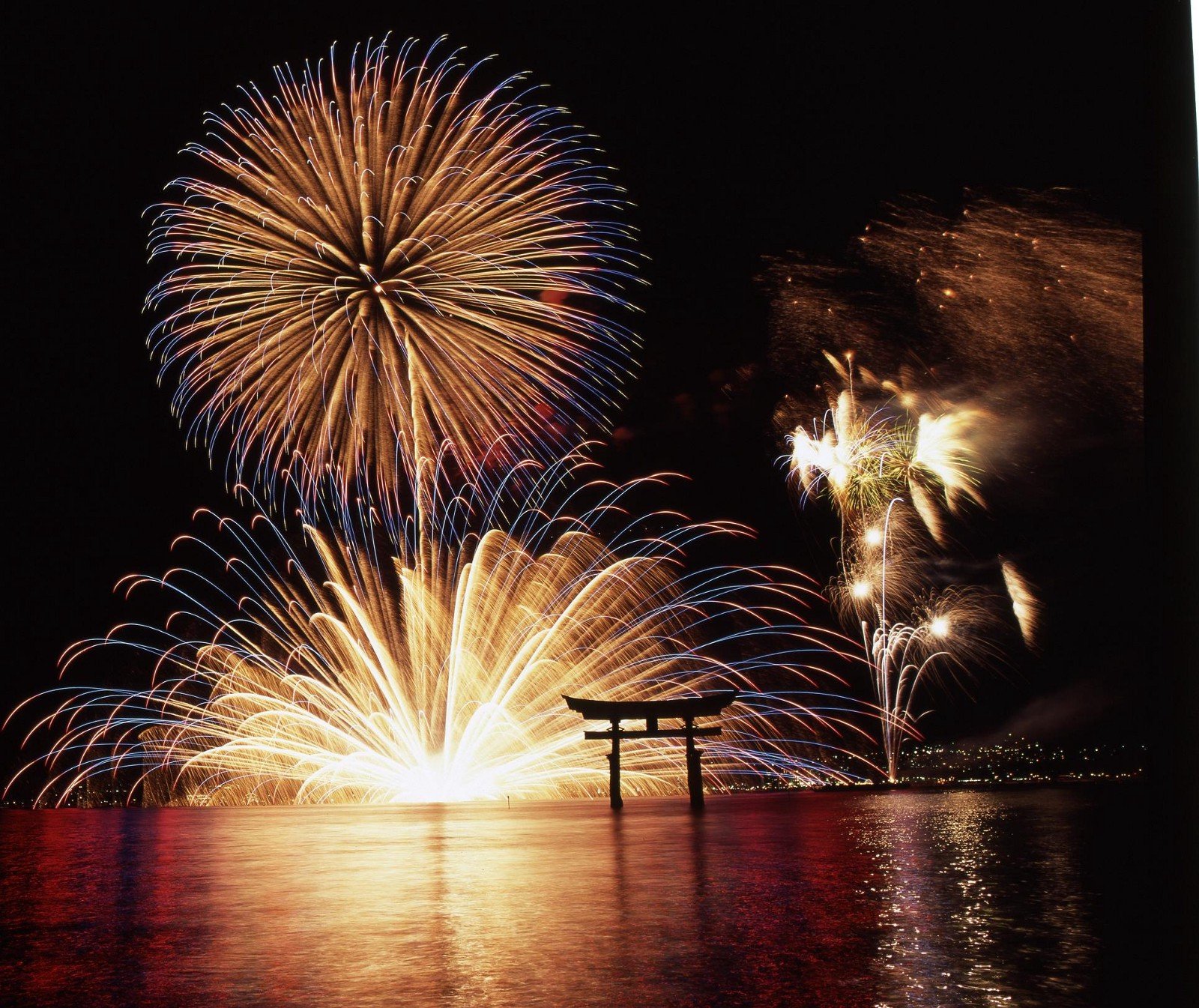
Miyajima Water Fireworks Festival (宮島水中花火大会)
Miyajima Water Fireworks Festival (宮島水中花火大会)
Time: August 24
Prefecture: Hiroshima
Location: Itsukushima Shrine
This fireworks festival brings together one of Japan's most picturesque settings with a beloved summer pastime – fireworks.
While it may not be as extravagant as some major city fireworks festivals, it boasts a unique advantage – the breathtaking backdrop of fireworks illuminating the water's surface behind the colossal torii gate.
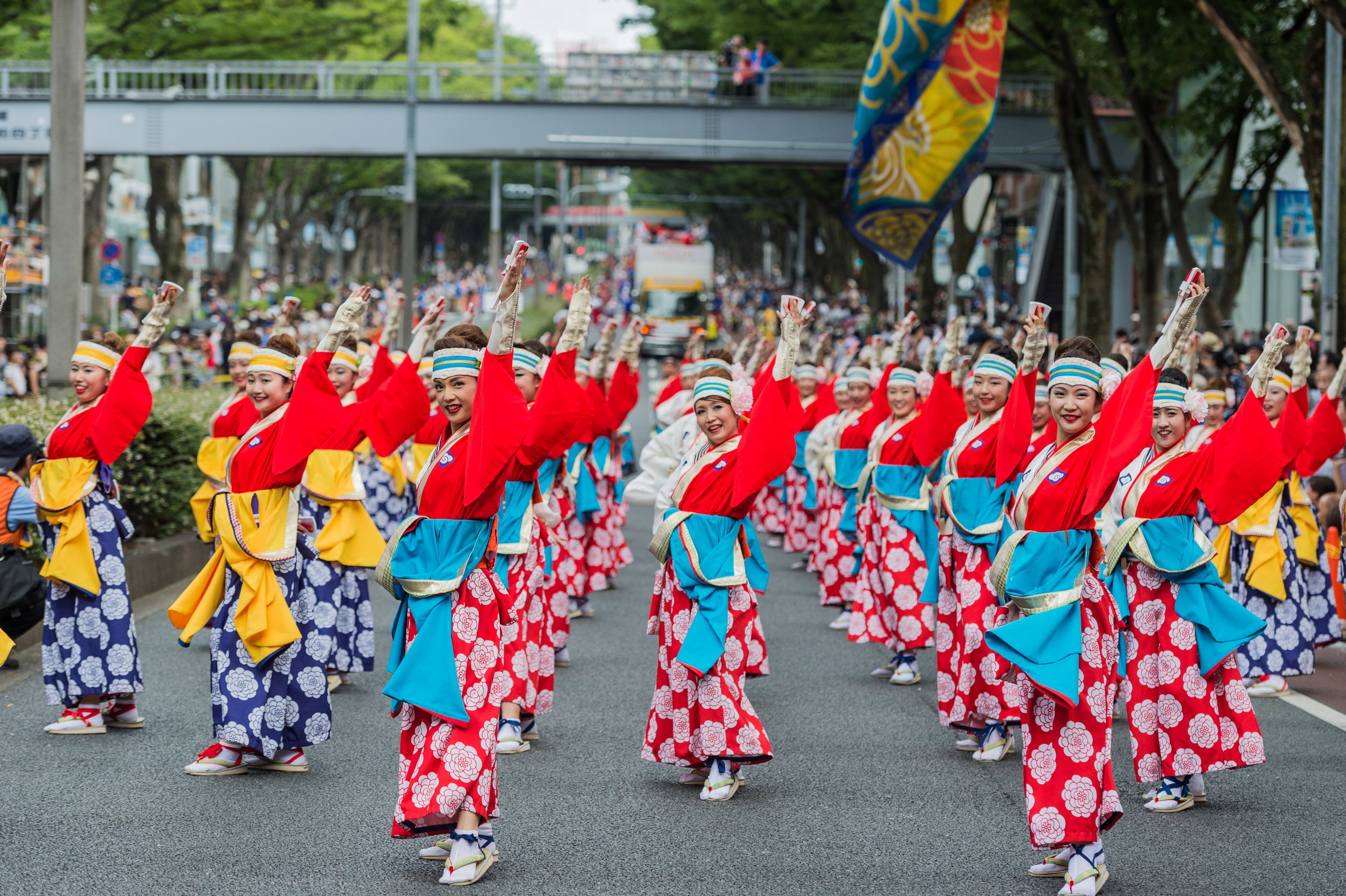
Harajuku Omotesando Super Yosakoi
Harajuku Omotesando Super Yosakoi (原宿表参道元氣祭スーパーよさこい)
Time: Late August
Prefecture: Tokyo
Location: Yoyogi Park
This colossal dance festival features an impressive scale, with 6,000 performers from dance groups across Japan vying for the top spot. The festivities include a vibrant parade in front of NHK, taking place along the avenue within Yoyogi Park that connects the park to Shibuya on both days.

Domannaka Festival (にっぽんど真ん中祭り)
Domannaka Festival (にっぽんど真ん中祭り)
Time: Late August
Prefecture: Nagoya
Location: Hisaya Odori Park
The Nippon Domannaka Festival, commonly known as Domatsuri, reigns as the largest team dance festival in the Chūbu region of central Japan and stands as one of Nagoya's most renowned events.
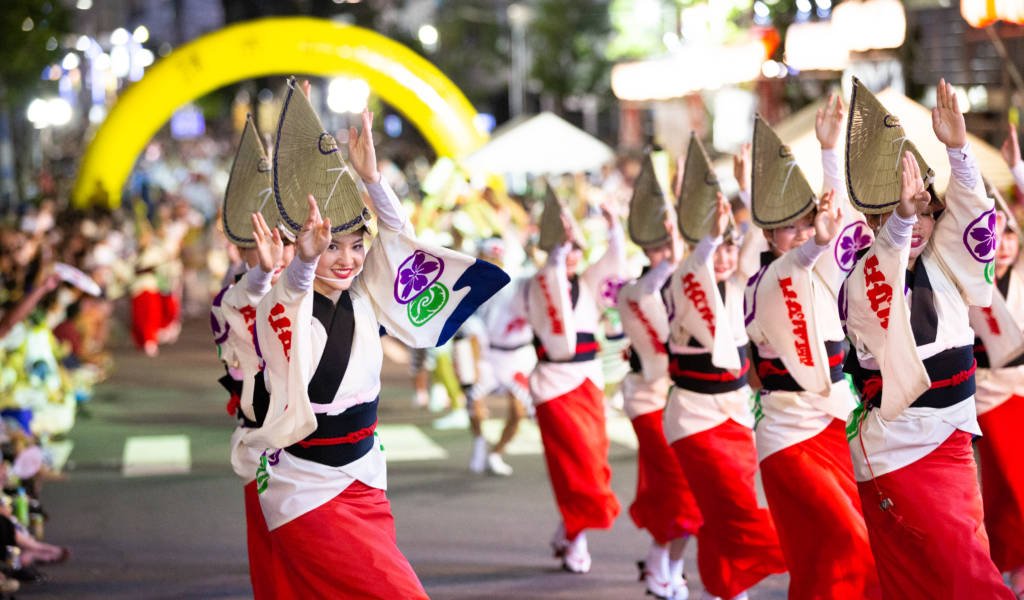
Kōenji Awa Odori (高円寺阿波踊り)
Kōenji Awa Odori (高円寺阿波踊り)
Time: Late August
Prefecture: Tokyo
Location: Kōenji
Spanning two lively days, the Kōenji Awa Odori Festival immerses participants in an abundance of spirited dancing. In contrast to many events during this season that endure the sweltering daytime temperatures, this festival opts for a more sensible approach by commencing its festivities in the refreshing cool of the evening. Organizers proudly showcase a lineup of 10,000 dancers and musicians, anticipating an impressive turnout of approximately 1 million spectators.
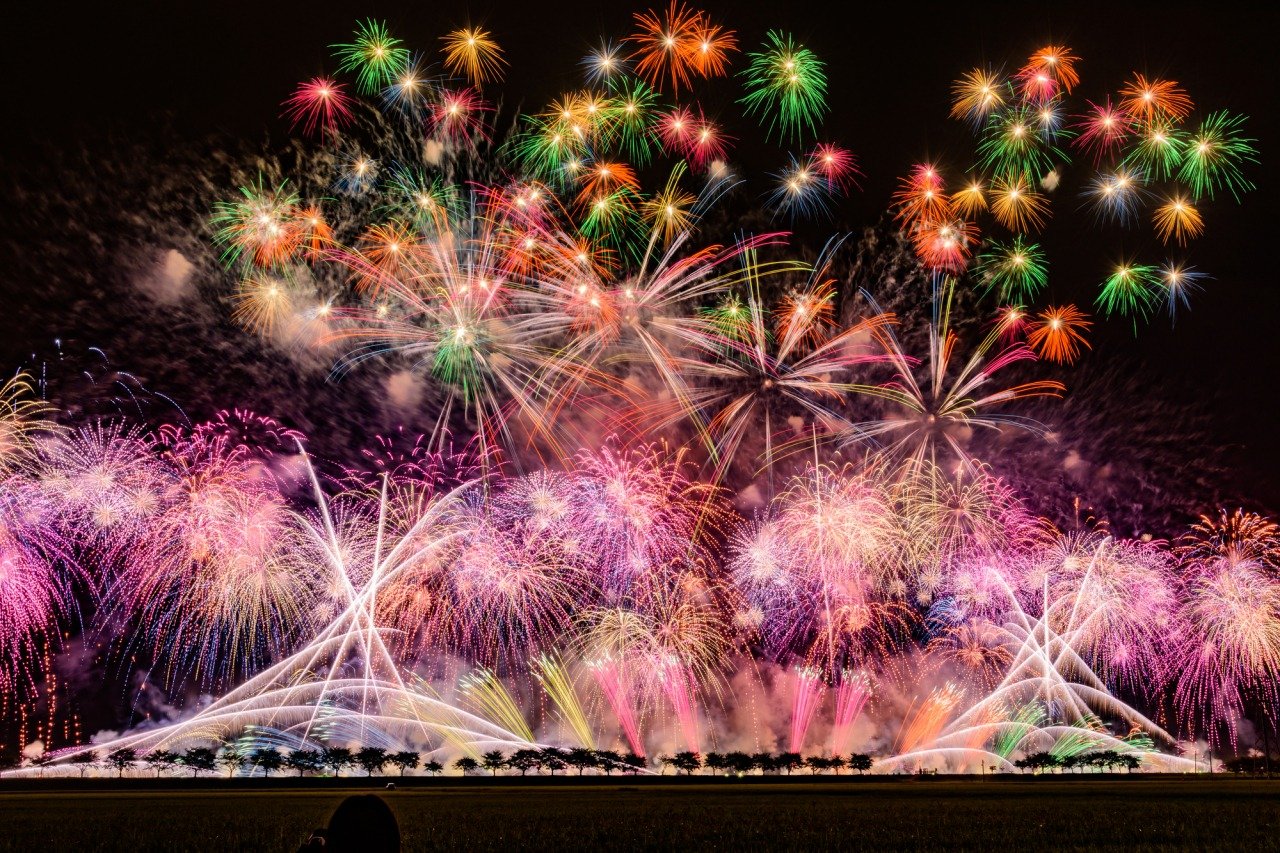
Omagari Hanabi (大曲の花火)
Omagari Hanabi (大曲の花火)
Time: August 31
Prefecture: Akita
Location: Omono Riverside Ryokuchi Athletic Park
Lonely Planet has aptly labeled the Omagari Hanabi as Japan's Olympics of fireworks, a spectacular event with a history extending over a century. Held in the city of Daisen, Akita Prefecture, this renowned festival attracts the most skilled pyrotechnicians from across the country. Against the backdrop of music, these artisans showcase their expertise, treating spectators to a breathtaking array of firework displays, making it a truly mesmerizing experience.

Kishiwada Danjiri Matsuri (岸和田だんじり祭り)
Kishiwada Danjiri Matsuri (岸和田だんじり祭り)
Time: Mid September
Prefecture: Osaka
Location: Kishiwada Castle
The Kishiwada Danjiri Festival, alternatively known as the Kishiwada Festival or the Old City Festival, is a longstanding cultural event hosted in Kishiwada City, Osaka Prefecture. This traditional celebration is part of the broader tradition of Danjiri festivals observed across the Kansai region, holding notable significance as a cultural heritage.
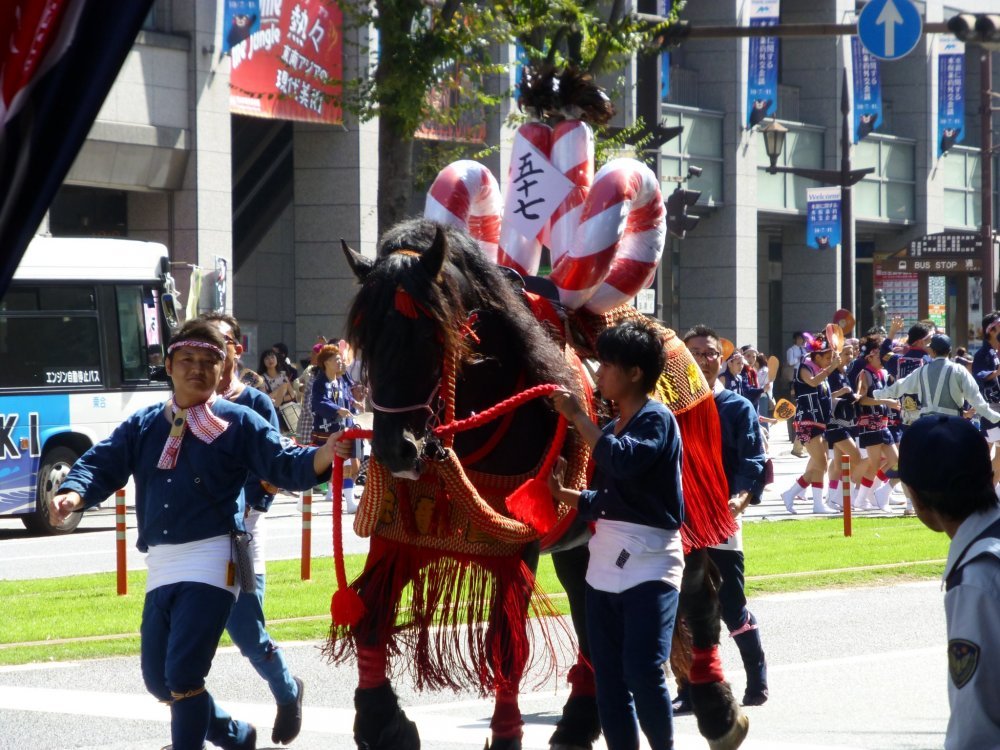
Fujisaki Hachimangu Festival (藤崎八旛宮秋季例大祭)
Fujisaki Hachimangu Festival (藤崎八旛宮秋季例大祭)
Time: Every year on the first Sunday or national holiday after September 16
Prefecture: Kumamoto
Location: Fujisaki Hachimangu Shrine
The Grand Festival of Fujisaki Hachimangu Shrine takes place in Chūō-ku, Kumamoto, every September. Marked by a procession of Shinto priests, it is notable for the tradition of followers chasing horses while shouting phrases like "Boshita, Boshita" in earlier times, and now, "Dookai Dookai" and other expressions. In recent years, the festival has seen the participation of around 17,000 people.
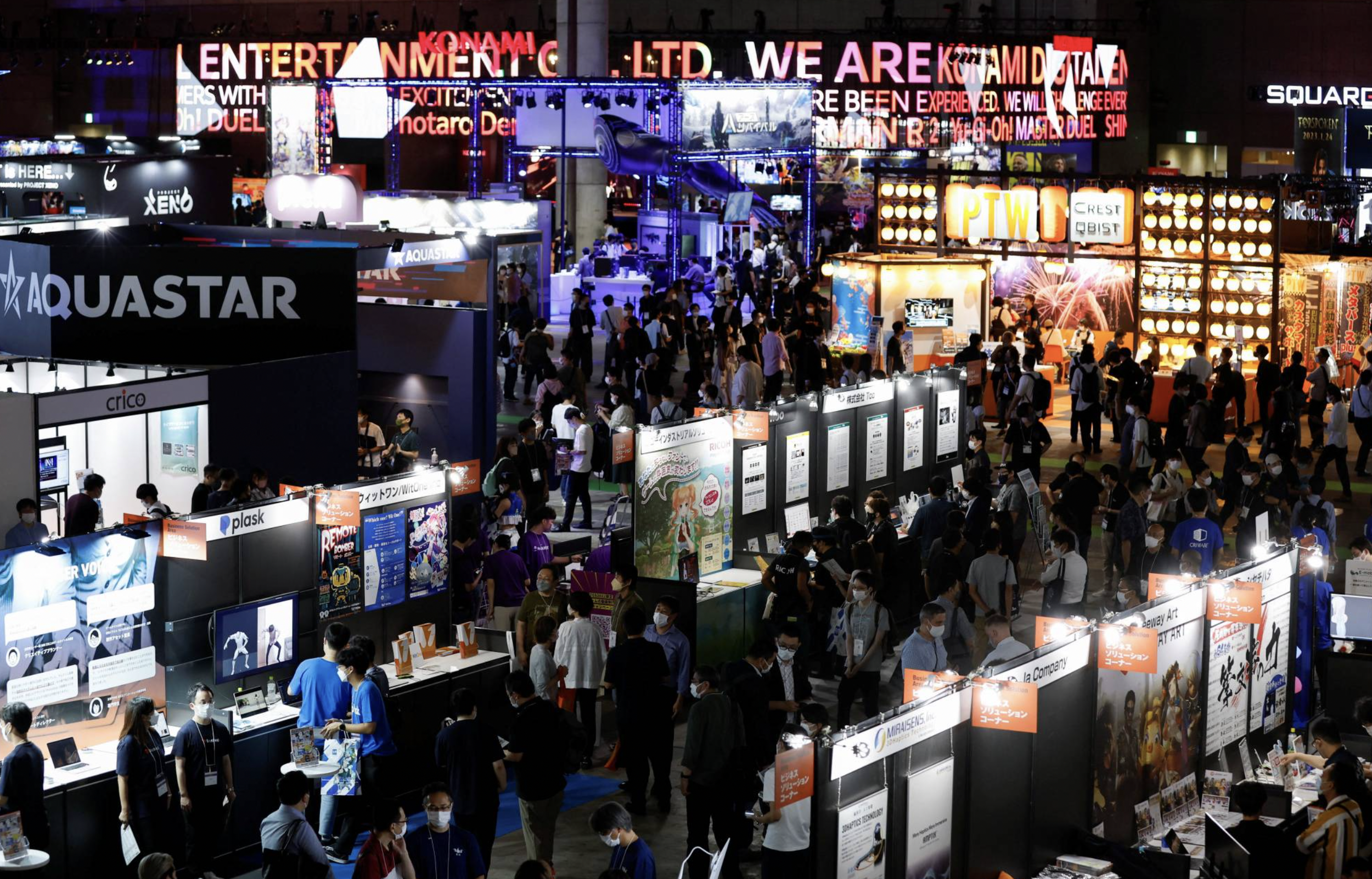
Tokyo Game Show (東京ゲームショウ)
Tokyo Game Show (東京ゲームショウ)
Time: Late September
Prefecture: Tokyo
Location: Makuhari Messe
The Tokyo Game Show continues to stand out as one of the premier gaming exhibitions globally. The initial two days cater exclusively to industry professionals, influencers, and press, while the following two days welcome a broader audience, providing an inclusive experience for gaming enthusiasts.
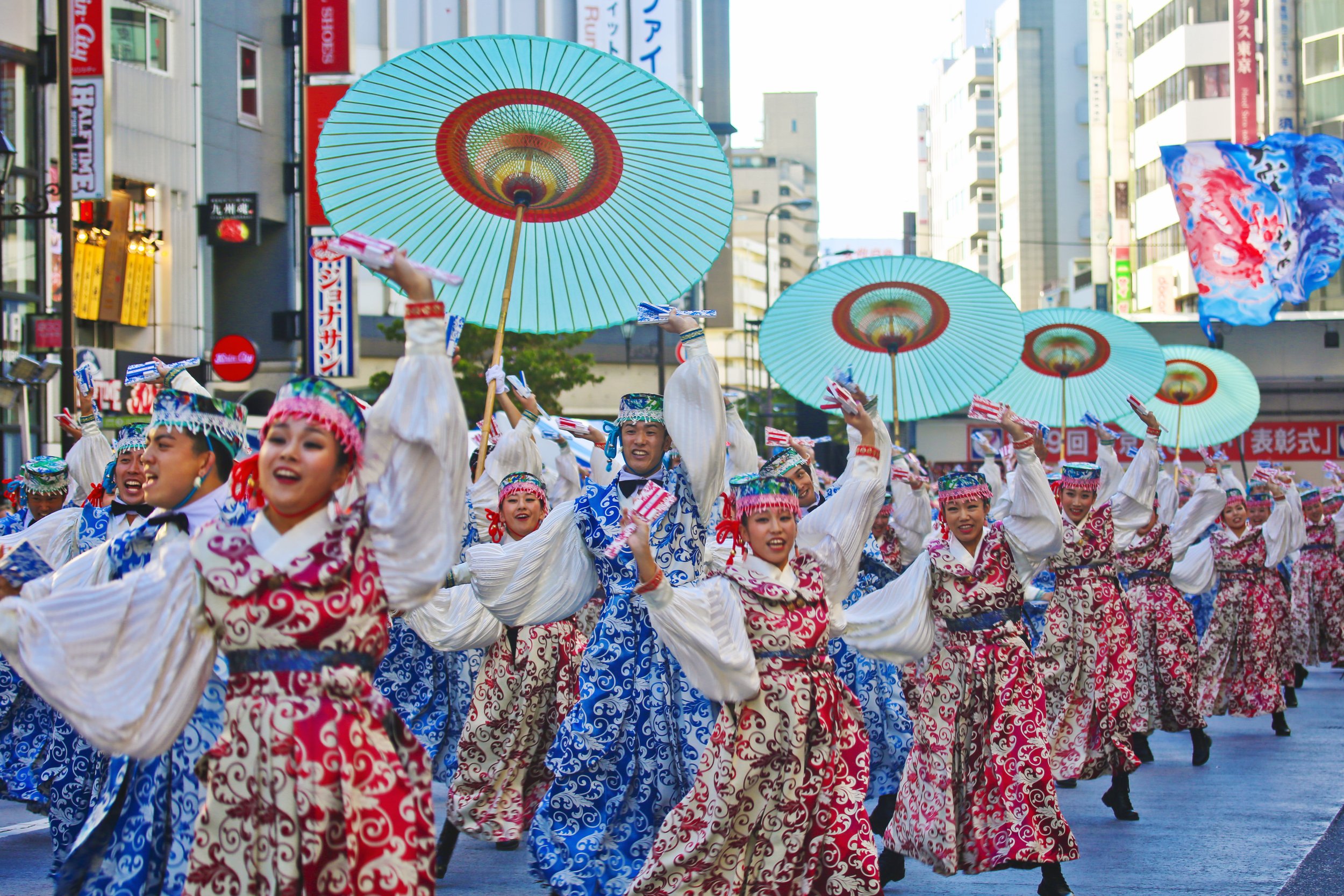
Fukuro Matsuri (ふくろ祭り)
Fukuro Matsuri (ふくろ祭り)
Time: Late September
Prefecture: Tokyo
Location: Ikebukuro
Originating in 1968 as a promotional initiative for four nearby shopping districts on the western outskirts of Ikebukuro Station, the Fukuro Festival has evolved into a monumental event, firmly establishing itself as one of the premier gatherings in the region. The festivities are divided into two main segments: the inaugural part features a lively mikoshi (portable shrine) parade, while the latter part is dedicated to the exuberant celebration of Yosakoi dancing.
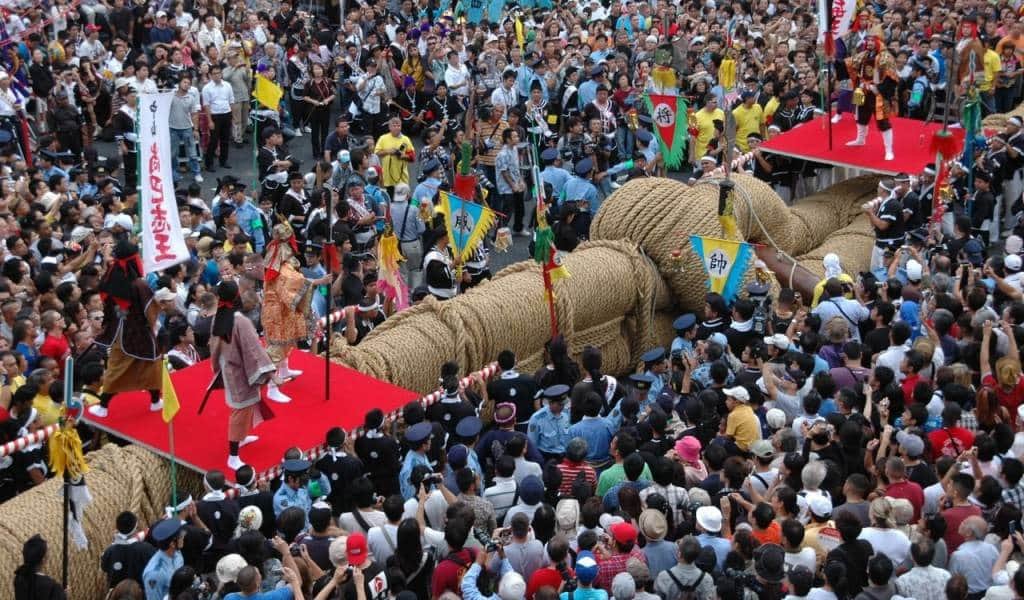
Naha Great Tug-of-War (那覇大綱挽)
Naha Great Tug-of-War (那覇大綱挽)
Time: Early October
Prefecture: Okinawa
Location: Kumoji Crossing, Naha
Annually on the Sunday before National Sports Day in Naha, Okinawa, a Tug-of-War event draws in thousands of participants and even larger crowds of spectators. This event holds a remarkable place in the Guinness Book of World Records since 1997, acknowledged as the largest tug-of-war event globally, featuring a 40-metric-ton, 200-meter long rope. Each side of the tug-of-war can accommodate up to 15,000 participants, making it a monumental and highly celebrated gathering.
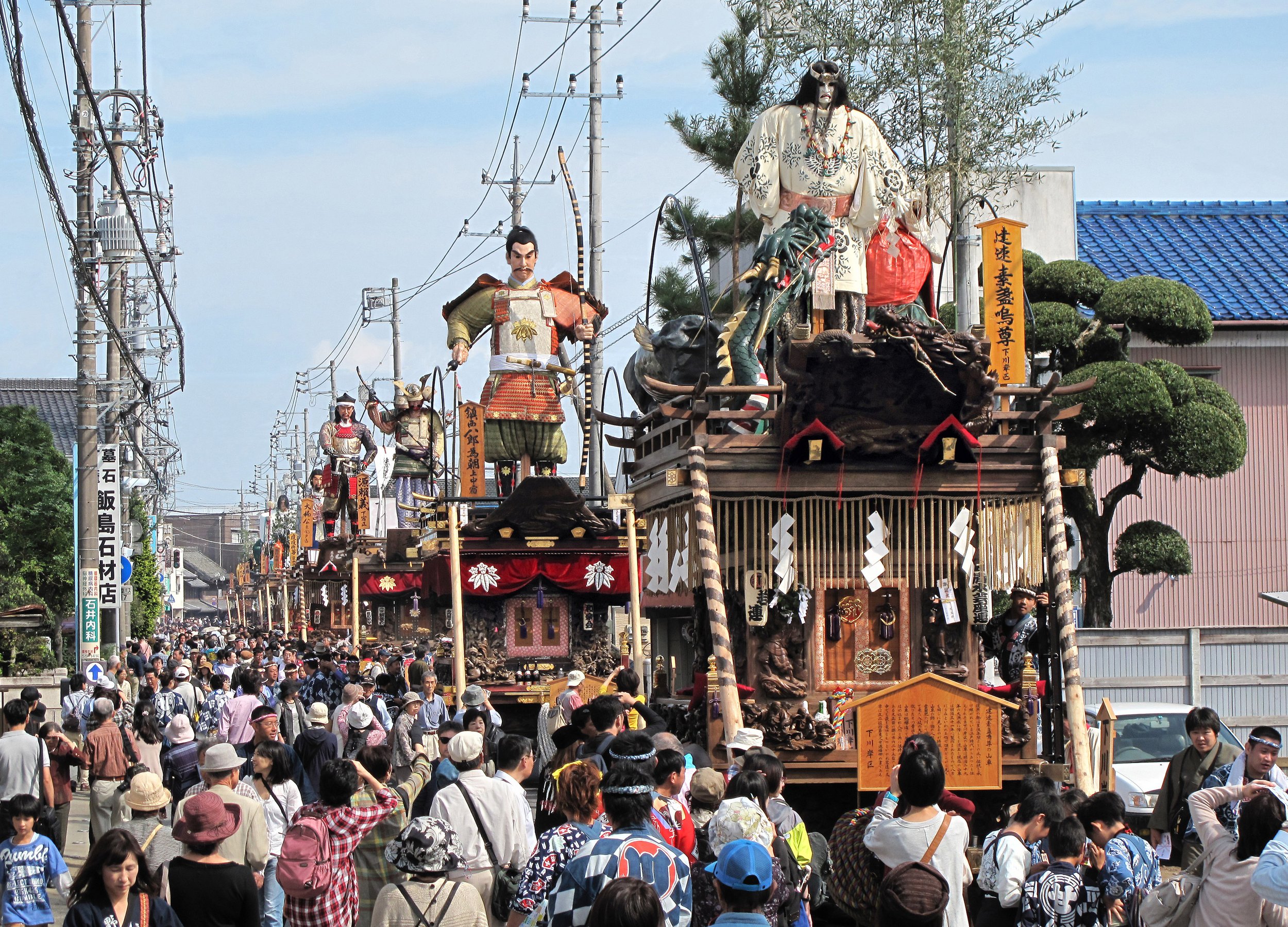
Sawara Matsuri (佐原の大祭)
Sawara Matsuri (佐原の大祭)
Time: October 11-13
Prefecture: Chiba
Location: Katori
The Sawara Grand Festival (Sawara no Taisai) collectively refers to both the Honjuku Gion Festival in July and the Shinjuku Autumn Festival in October, held in the heart of Sawara, situated in the city of Katori, Chiba Prefecture. Alongside the Kawagoe Hikawa Festival and the Hitachi Kuni Sousha Shrine Grand Festival (Ishioka Festival), it holds prestigious status as one of the three major festivals in the Kanto region. This festival earned its place on the UNESCO Representative List of the Intangible Cultural Heritage of Humanity in December 2016.
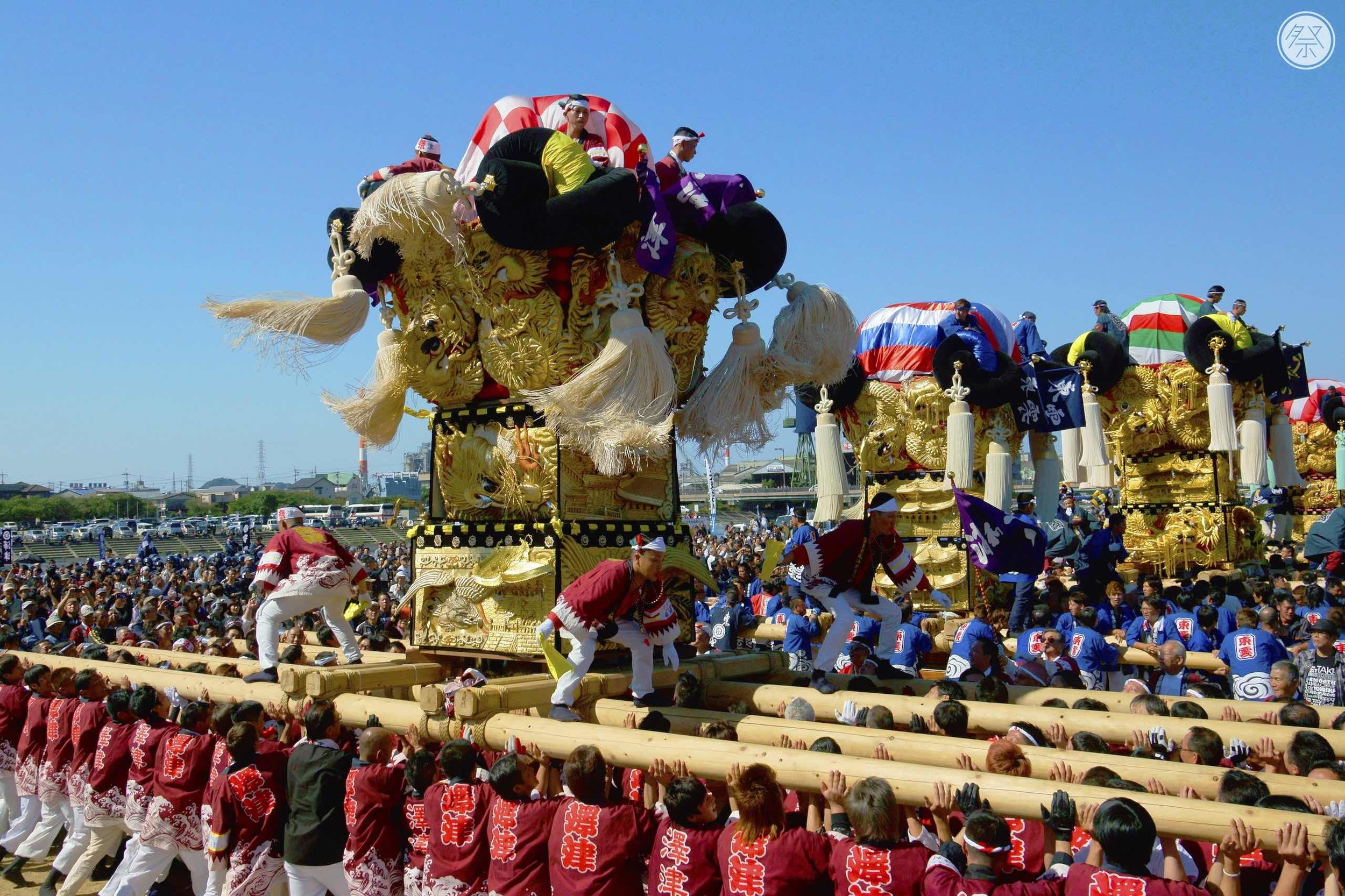
Niihama Drum Festival (新居浜太鼓祭り)
Niihama Drum Festival (新居浜太鼓祭り)
Time: Mid October
Prefecture: Ehime
Location: Various Areas in Niihama City
The Niihama Drum Festival stands proudly among the top three festivals in Ehime Prefecture, Shikoku. This autumn taiko festival is a vibrant celebration of the annual harvest, with roots tracing back a thousand years. Rooted in sacred traditions, it holds an indispensable place in the rich history of Niihama City.
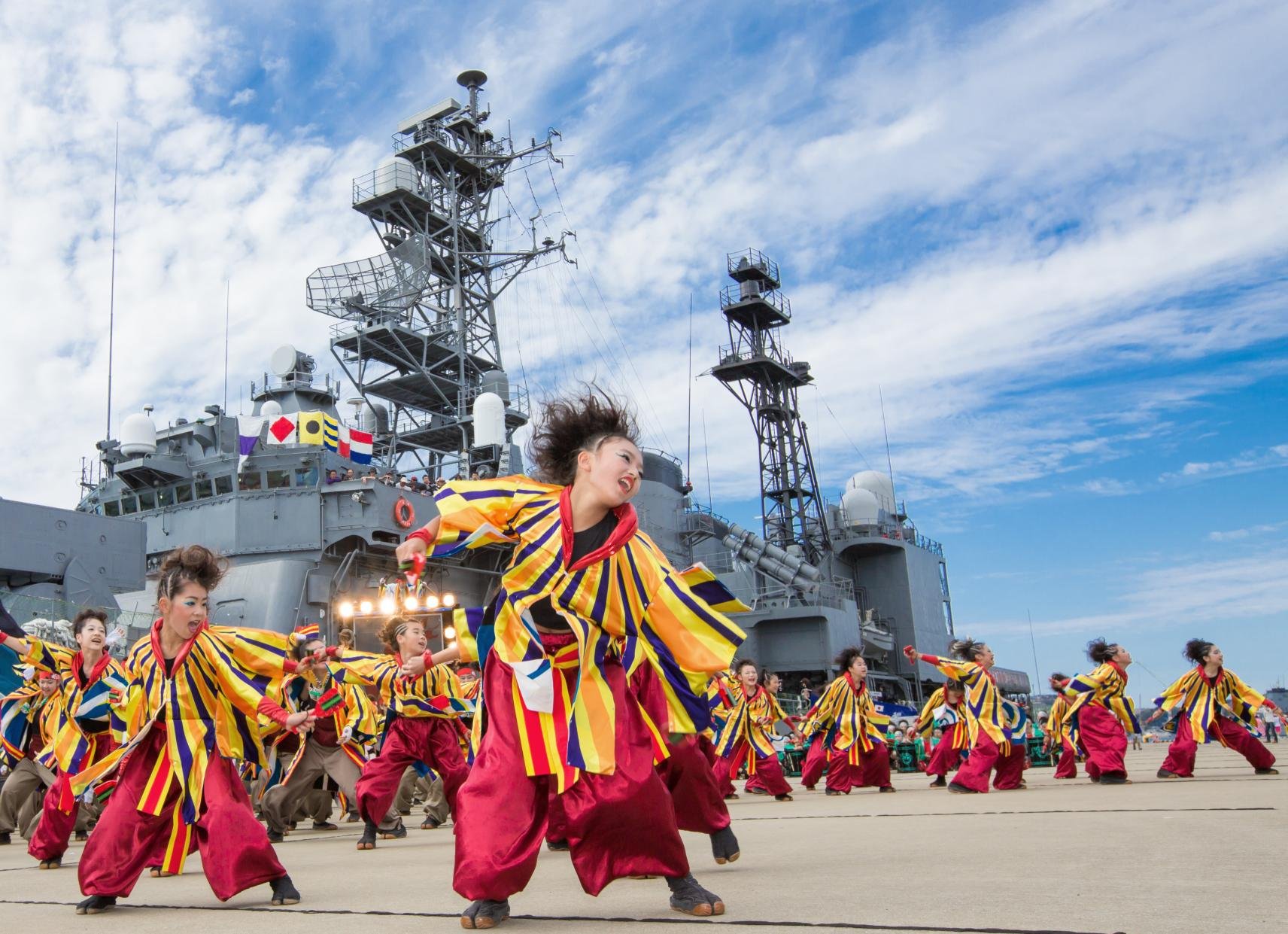
Sasebo Yosakoi Festival in Nagasaki (YOSAKOIさせぼ祭り)
Sasebo Yosakoi Festival (YOSAKOIさせぼ祭り)
Time: End of October
Prefecture: Nagasaki
Location: Sasebo / Huis Ten Bosch
As the most extensive Yosakoi dance festival in Kyushu, its primary goal is to leave a lasting impression, enticing both spectators and participants to return to Sasebo for future festivities. Teams converge from various parts of Japan, showcasing their dynamic dances at multiple venues throughout the city.
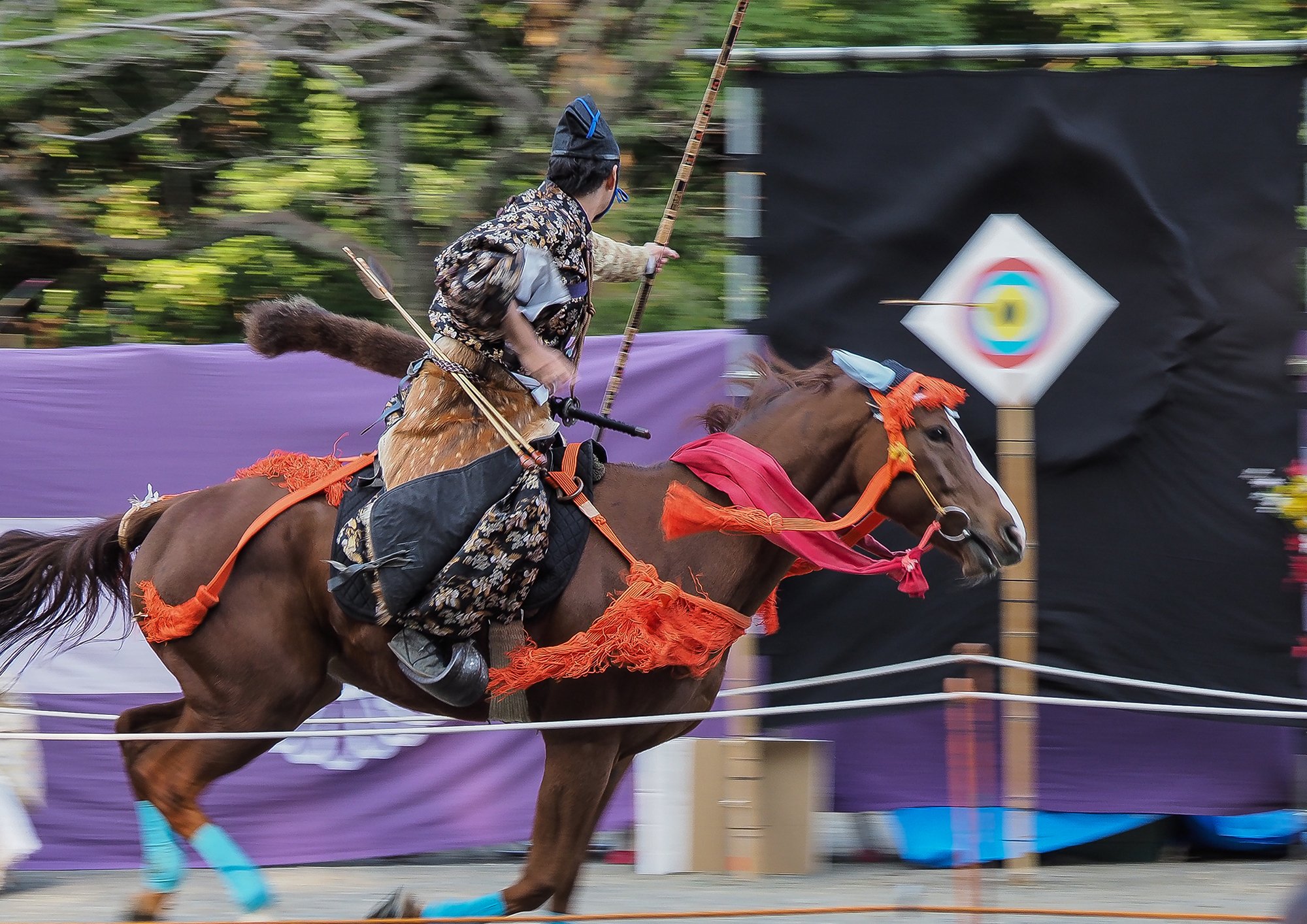
Machida Jidai Matsuri (町田時代祭り)
Machida Jidai Matsuri (町田時代祭り)
Time: Late October
Prefecture: Tokyo
Location: Serigaya Park
Immerse yourself in the rich tapestry of traditional Japanese culture at our event, featuring the Jidai Matsuri, a celebration known as the "Period Festival." Witness a historical reenactment portraying the lives of warriors from the Satoyama region in Machida during Japan's feudal period, complete with authentic costumes.

Kyoto Gozan no Okuribi (京都五山送り火)
Kurama Fire Festival (鞍馬の火祭)
Time: October 22
Prefecture: Kyoto
Location: Yuki Shrine
Every year on the evening of October 22nd, the entirety of Kurama town is aglow with torch fire. This annual fire festival stands among the top three grand celebrations in Kyoto, attracting throngs of spectators eager to witness the mesmerizing parade and participate in the religious ceremonies. The festivities commence at 6:00 pm, right after sunset.
Adorned in traditional attire, participants ignite pine torches and hoist them upon their shoulders, traversing the village while exclaiming the spirited phrase, "festival, good festival!" Children carry smaller torches, while adults bear torches extending up to three meters in length. According to tradition, the torch fire serves the purpose of guiding spirits from hell through the realm of the living.
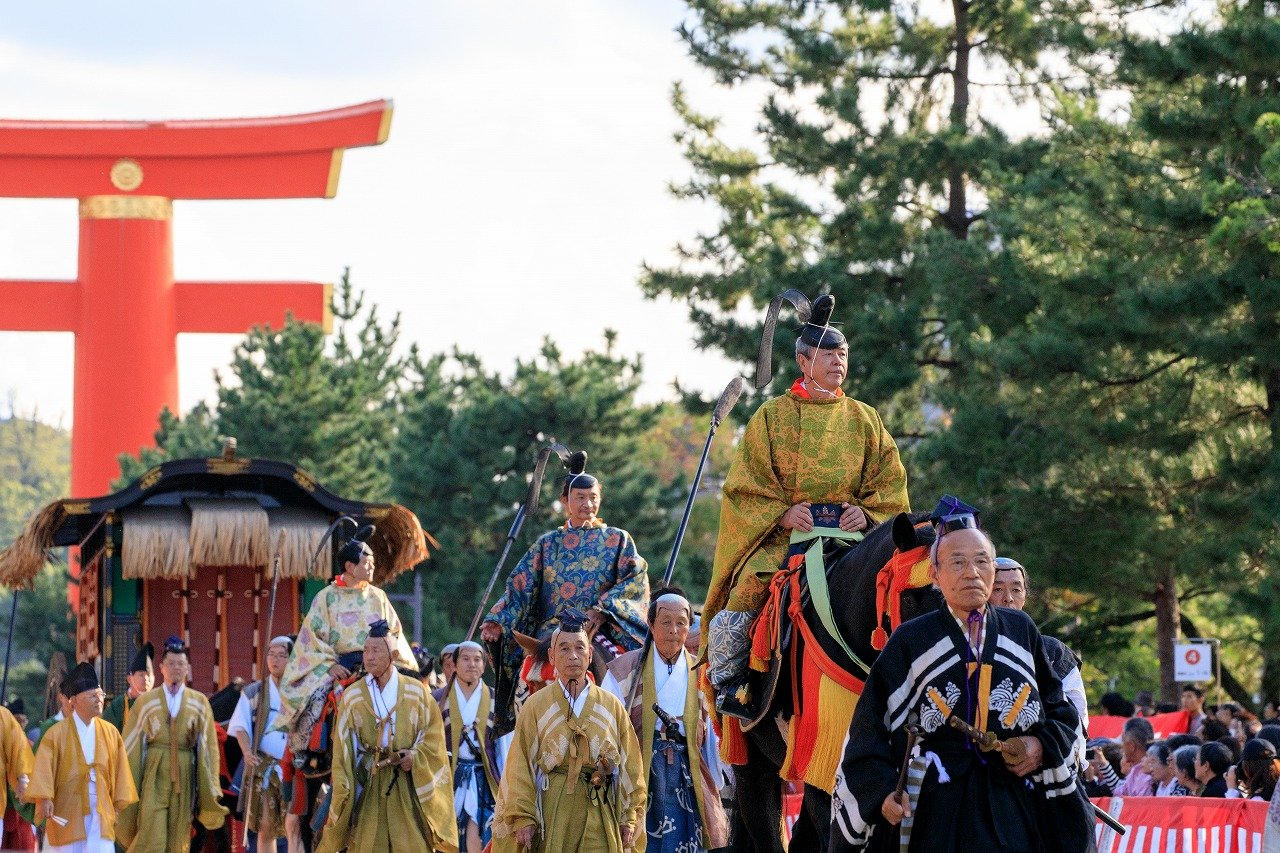
Jidai Matsuri (時代祭)
Jidai Matsuri (時代祭)
Time: Late October
Prefecture: Kyoto
Location: Heian-jingū Shrine, Kyoto Imperial Palace
The Jidai Matsuri is a historical celebration marking the establishment of Kyoto as the Imperial capital in 794 by Emperor Kammu, making it a must-see for history enthusiasts. This grand procession involves over 2000 participants donning costumes representing various eras of Japanese history. The march commences from the Kyoto Imperial Palace in the morning, spanning several kilometers to reach Heian Jingu Shrine.
Notably, geisha take part in the Jidai Matsuri, adorned in junhitoe kimono, known for their elegance and intricate design. Established in 1895, the festival prioritizes authenticity, ensuring that costumes, music, and symbolism remain historically accurate.
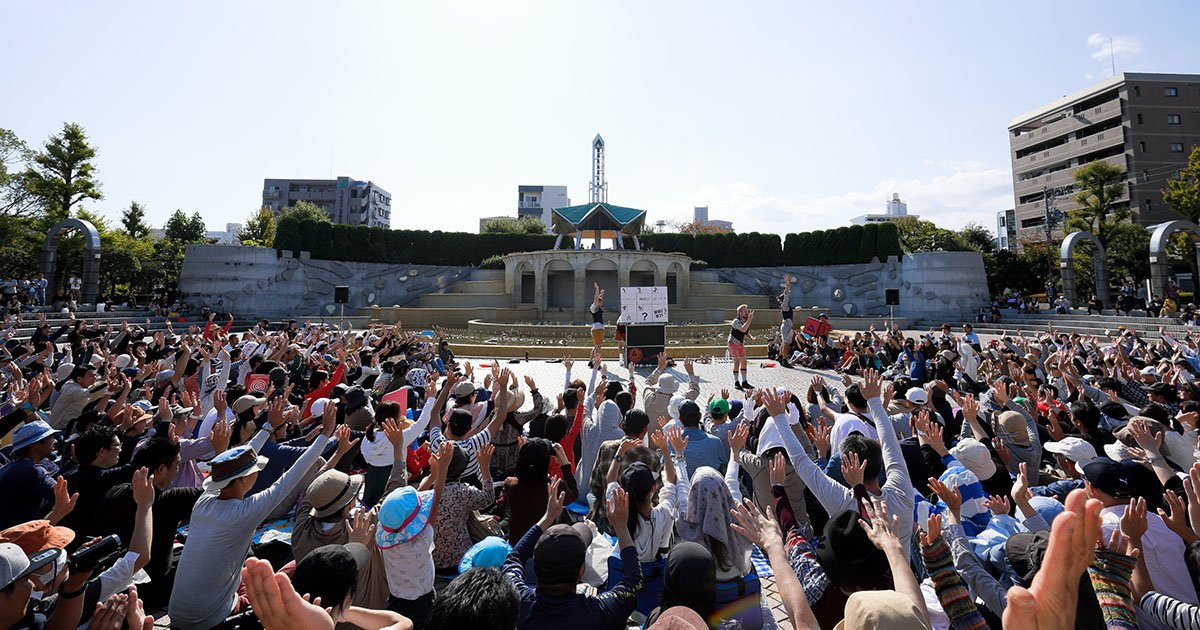
Daidogei Street Performance World Cup (大道芸ワールドカップin静岡)
Daidogei Street Performance World Cup (大道芸ワールドカップin静岡)
Time: Early November
Prefecture: Shizuoka
Location: Shizuoka City Sunpu Castle Park, Shizuoka Cultural Center, Suruga Ward Satellite (Apita Shizuoka Store), Shimizu Ward Satellite (Espals Dream Plaza)
Since 1992, the Daidogei World Cup has been an annual event held every November in the city of Shizuoka. Over the course of four days, Shizuoka transforms into a vibrant living theater, becoming one of Asia’s premier street theater festivals.
The festival attracts top-notch domestic and international artists from around the world who compete against each other to win the favor of millions of visitors attending the event each year. The Daidogei World Cup has become a highlight, showcasing a diverse range of street performances and talents, contributing to the cultural richness of the region.
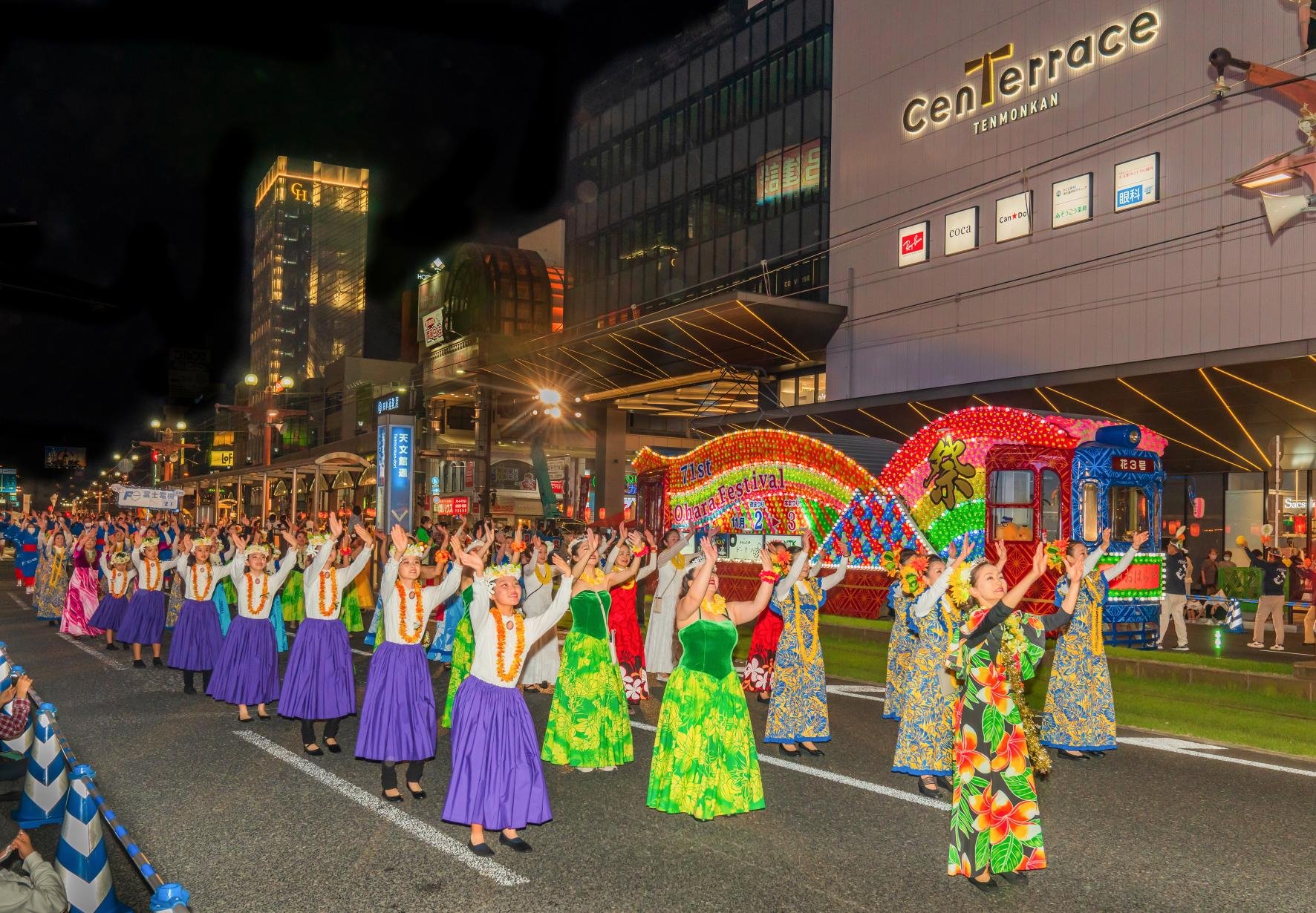
Kagoshima Ohara Festival (おはらまつり)
Kagoshima Ohara Festival (鹿児島おはらまつり)
Time: Early November
Prefecture: Kagoshima
Location: Tenmonkan
Kagoshima's largest annual festival makes its comeback every November, offering vibrant traditional dance parades, taiko performances, and a host of other cultural attractions.
Taking place along the tram line route in the downtown Tenmonkan area, this festival traces its origins back to 1949. It was initiated to commemorate Kagoshima's municipalization, marking 60 years since its establishment. Since then, thousands of attendees gather each year to partake in the festivities, celebrating with traditional music, including the renowned 'Ohara-bushi', which lends its name to the festival.
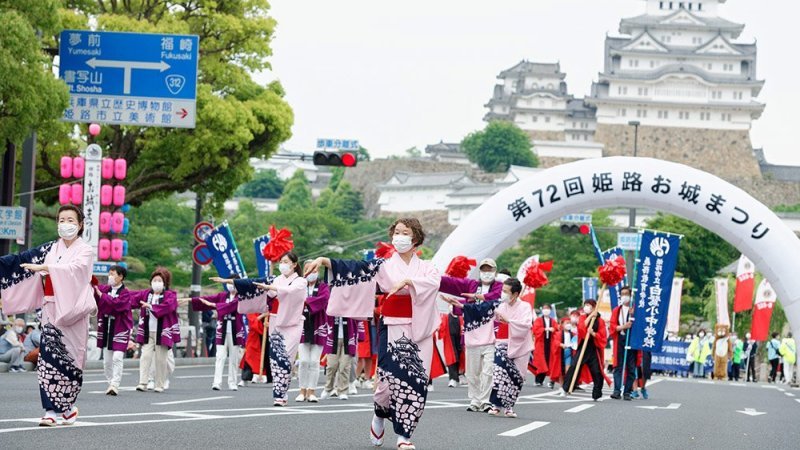
Himeji Castle Festival (姫路お城まつり)
Himeji Castle Festival (姫路お城まつり)
Time: Mid November
Prefecture: Hyogo
Location: Himeji Castle
Himeji Castle stands as one of Japan's meticulously preserved castles, earning its UNESCO World Heritage designation in 1993. An optimal time to experience the grandeur of this historic site is during the Himeji Castle Festival, a venerable tradition spanning over 70 years. This annual event unfolds over three days in November, offering visitors a unique opportunity to immerse themselves in the cultural and historical richness surrounding Himeji Castle.

Takayama Festival (高山祭・Takayama Matsuri)ーSpring Festival
Takayama Festival (高山祭・Takayama Matsuri)ーSpring Festival
Time: April 14-15
Prefecture: Gifu
Location: Hie Shrine
The festival is considered one of Japan's top three beautiful festivals, alongside Kyoto's Gion Matsuri and the Chichibu Yomatsuri. It takes place twice a year in the charming old town of Takayama, drawing numerous spectators. Also known as the Sanno-sama Festival due to the shrine's name, it's a significant annual event during the spring season.
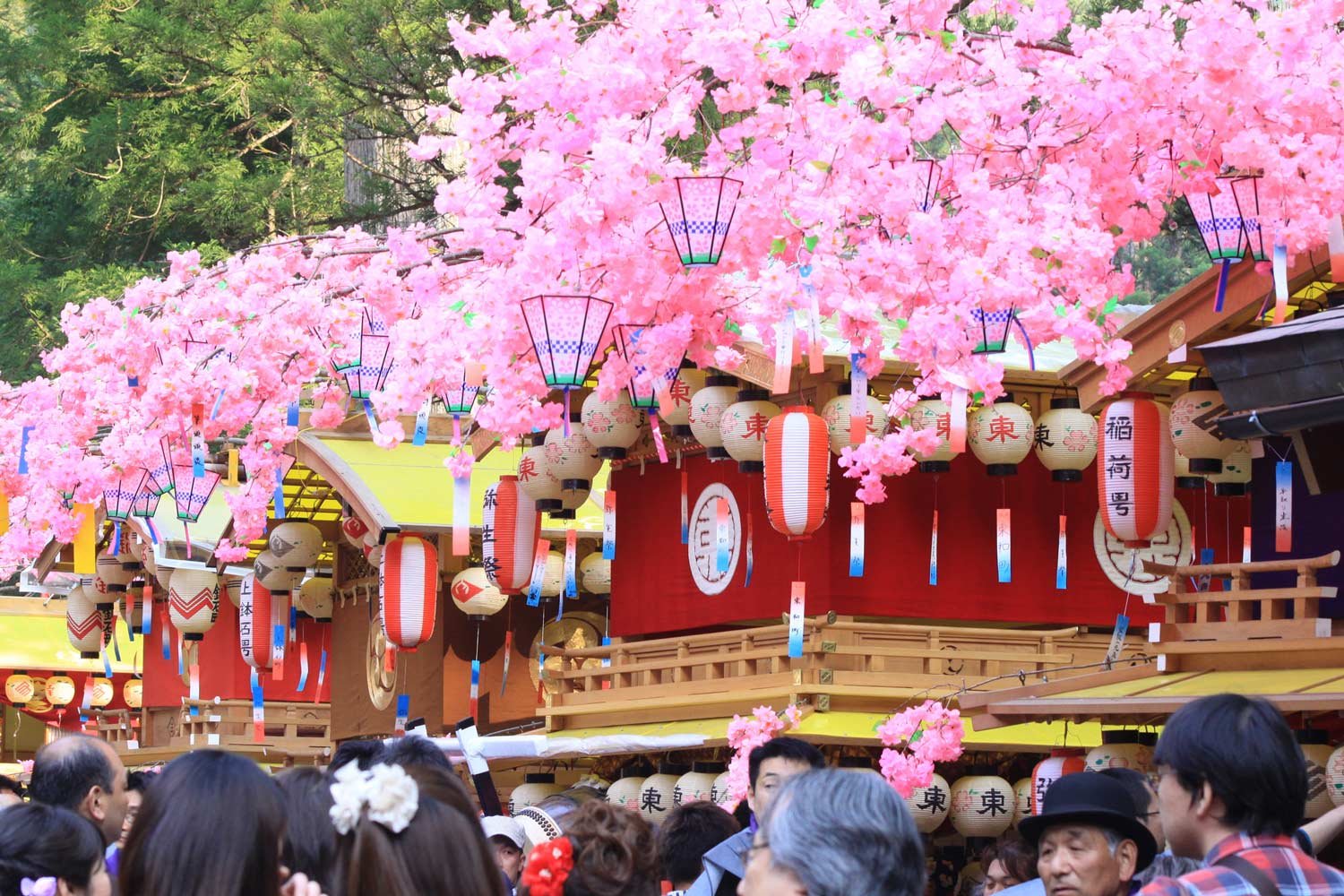
Yayoi Festival (弥生祭)
Yayoi Festival (弥生祭)
Time: April 13 - 17
Prefecture: Tochigi
Location: Futarasan-jinja
The Yayoi Festival (弥生祭, Yayoi Matsuri) is an annual event taking place from April 13 to 17 at Futarasan-jinja. With a history dating back 1,200 years, it is considered the festival that heralds the arrival of spring. The celebration involves the procession of numerous portable shrines (mikoshi), and visitors are welcomed to join in the lifting of these shrines, contributing to the festive atmosphere.

Earth Day Tokyo (アースデイ東京)
Earth Day Tokyo (アースデイ東京)
Time: Mid to Late April
Prefecture: Tokyo
Location: Yoyogi Park Events Square, Miyashita Park
Earth Day Tokyo brings together a diverse range of environmental NPOs and charities that you might not have known existed in the city. These organizations use the event to recruit and spread awareness. Additionally, eco-friendly businesses sell their products, and attendees can enjoy free art, vibes, and music. For vegetarians, the Earth Day Kitchen Zone offers plenty of options, providing a unique and inclusive experience in Tokyo.

Kanamara Matsuri (かなまら祭)
Kanamara Matsuri (かなまら祭)
Time: April 7
Prefecture: Kanagawa
Location: Kanayama Shrine
The Kanamara Festival, famously known as the Penis Festival, held at Kanayama Shrine in Kawasaki, showcases phallic imagery incorporated into various aspects, including decorations and snacks alongside traditional festival fare.
A notable highlight is the mikoshi (portable shrine) parade featuring numerous giant phalli, taking place just before noon. Interestingly, individuals in drag participate in carrying the distinctive pink "Elizabeth Mikoshi," a contribution from a drag queen club named Elizabeth. The proceeds generated from this unique event contribute to HIV research.

Inuyama Festival (犬山祭)
Inuyama Festival (犬山祭)
Time: Early April
Prefecture: Aichi
Location: Haritsuna Shrine
The Inuyama Matsuri takes place at the start of April in the city of Inuyama, Aichi Prefecture.
Timed with the cherry blossoms in full bloom, the festival showcases processions of three-tiered dashi—traditional wheeled floats. With roots dating back to 1635, the festival gained official recognition from the Japanese government in 2006 as an "Intangible Folk Cultural Property," presumably for safeguarding cultural heritage.

Himeji Sakura Festival (姫路桜祭り)
Himeji Sakura Festival (姫路桜祭り)
Time: Early April
Prefecture: Hyogo
Location: Himeji Castle
Himeji Castle is adorned with around 1,000 cherry trees, earning its distinction as one of the "Top 100 Cherry Blossom Viewing Spots in Japan." Key points of interest encompass the enchanting Three Bailey Square, bordered by cherry trees, and the captivating display of Somei Yoshino and Shidarezakura (weeping cherry) trees gracing the West Bailey Garden.
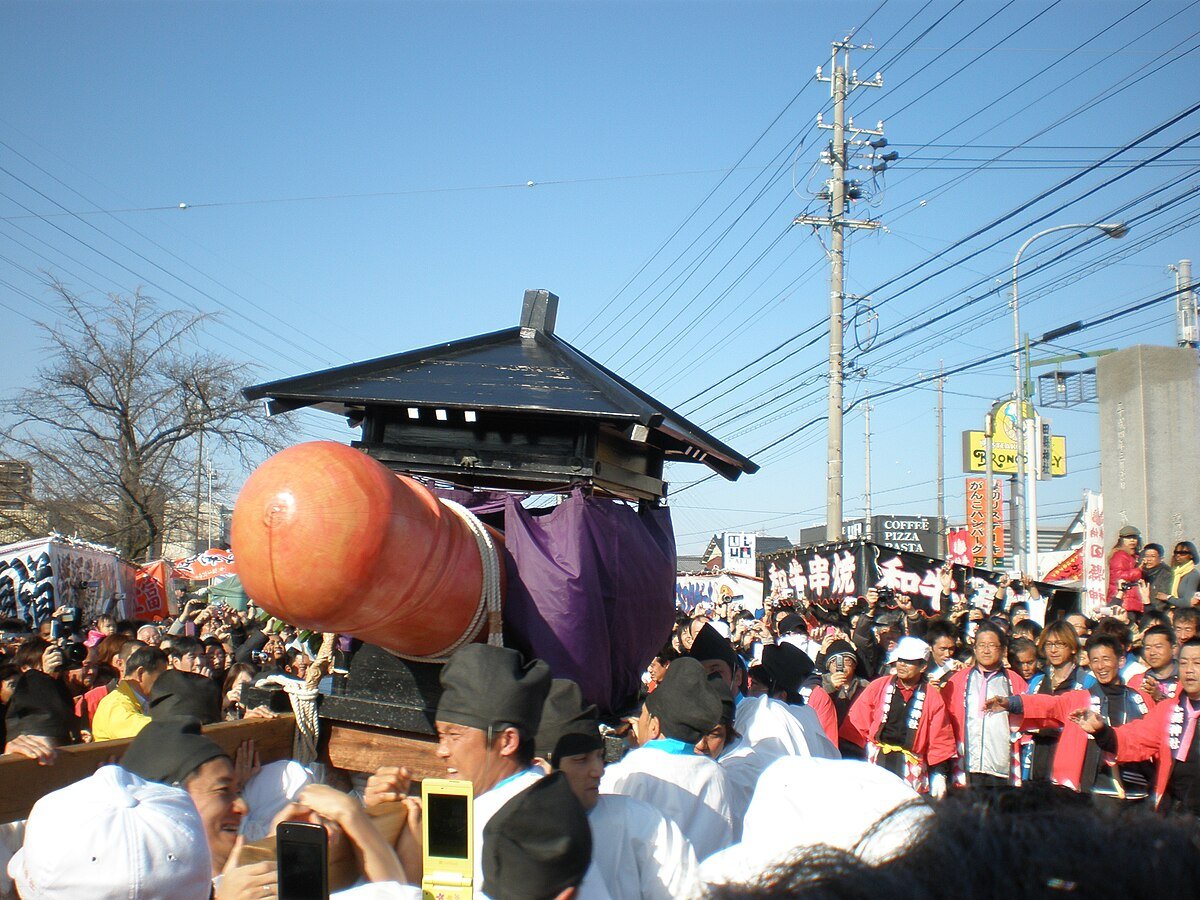
Honen Matsuri Aichi (豊年祭)
Honen Matsuri Aichi (豊年祭)
Time: Mar 15
Prefecture: Aichi
Location: Tagata Shrine
Observed annually on March 15th at Tagata Shrine, Tagata Honensai is a fertility celebration that joyously marks the themes of abundant harvest, prosperity, and fertility. Situated in the city of Komaki, just north of Nagoya, this event can be classified as one of the various festivals in Japan that playfully incorporate symbolic elements related to fertility, often recognized informally as "penis festivals."

St. Patrick's Day Parade Tokyo (セントパトリックスデーパレード東京)
St. Patrick's Day Parade Tokyo (セントパトリックスデーパレード東京)
Time: Mid March
Prefecture: Tokyo
Location: Omotesando Hills
Annually, a green wave sweeps through Omotesando Hills during Tokyo's St. Patrick's Day parade, marking the second part of a festive weekend. Preceding this vibrant procession, the "I Love Ireland" festival takes place at Yoyogi Park the day before.
Established in 1992, the St. Paddy's Day parade stands as the largest Irish event in Japan. Typically occurring over a weekend in mid-March, the festival attracts a significant crowd eager to immerse themselves in the lively and celebratory atmosphere.

Nakizumo Crying Baby Festival (泣き相撲)
Nakizumo Crying Baby Festival (泣き相撲)
Time: Mid March
Prefecture: Tokyo
Location: Senso-ji Temple
The Nakizumo Crying Baby Festival is an annual event that attracts eager parents with one-year-olds dressed in fancy attire to various locations in Japan. This unique festival is a competition between babies, with the victor being the first to cry.
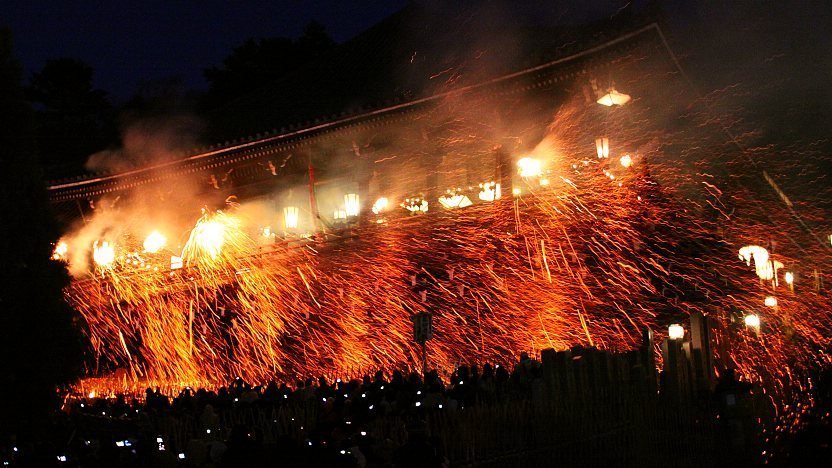
Omizutori (お水取り)
Omizutori (お水取り), also known as Shunie
Time: March 1-14
Prefecture: Nara
Location: Todaiji Temple
With a history spanning over 1250 years, Omizutori is one of Japan's oldest recurring Buddhist events. These rituals take place at Nigatsudo Hall, a sub-temple of Todaiji, situated near the main hall of the temple on a hill. The term "Nigatsudo" translates to "second-month hall," aligning with the lunar calendar's second month, which corresponds to the solar calendar's March.

Katsuura Big Hinamatsuri (かつうらビッグひな祭り)
Katsuura Big Hinamatsuri (かつうらビッグひな祭り)
Time: Late February - Early March
Prefecture: Chiba
Location: Tomisaki Shrine
The Katsuura Big Hinamatsuri is one of the largest Hinamatsuri (Dolls' or Girls' Day) events in Japan, featuring around 4,000 traditional Japanese dolls arranged throughout Katsuura City.
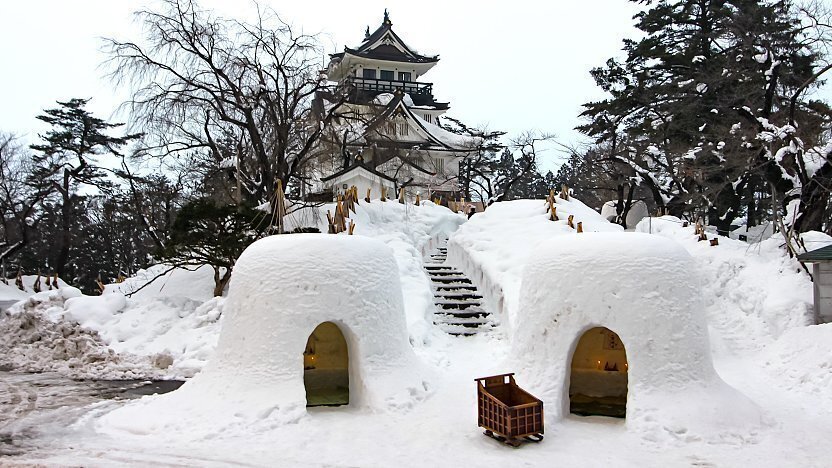
Yokote Kamakura Festival (横手の雪まつり・Yokote no Yuki Matsuri)
Yokote Kamakura Festival (横手の雪まつり・Yokote no Yuki Matsuri)
Time: February 15-16
Prefecture: Akita
Location: Yokote Central City Hall Festival Plaza
The festival is characterized by the construction of numerous igloo-like snow houses known as kamakura, which are scattered throughout the city.

Otaru Light Snow Path (小樽雪あかりの路)
Otaru Light Snow Path (小樽雪あかりの路)
Time: Mid February
Prefecture: Hokkaido
Location: Otaru Station
Aligned with Sapporo's expansive winter festival, Otaru's Light Snow Path event offers a more intimate experience. The streets and canals of this coastal city to the northwest of Sapporo come alive with the gentle glow of candlelit snow lanterns.

Oni Matsuri (瀧山寺 鬼まつり)
Oni Matsuri (瀧山寺 鬼まつり)
Time: February 10
Prefecture: Aichi
Location: Takisanji Temple Main Hall
In the grand spectacle of this festival, occurring on the Saturday nearest to the seventh day of the lunar calendar, participants carry around 30 torches into the main hall of Takisanji Temple—an esteemed national cultural property. Amidst the fervent flames, they engage in a spirited dance. Accompanied by numerous individuals wielding large torches, the scene unfolds like a chaotic dance. Ogres adorned with masks representing a grandfather, grandmother, and grandchild—attributed to the legendary Unkei—emerge, bringing forth an atmosphere of intense fire, symbolizing the bestowal of peace and a bountiful harvest upon the land.

Asahikawa Winter Festival (旭川冬まつり)
Asahikawa Winter Festival (旭川冬まつり)
Time: February 7 - 12
Prefecture: Hokkaido
Location: Asahibashi
The Asahikawa Winter Festival is a significant winter celebration in Hokkaido, coinciding with Sapporo's Snow Festival. It stands out for hosting some of the largest snow sculptures, including a special one designed as a stage for music and performances.
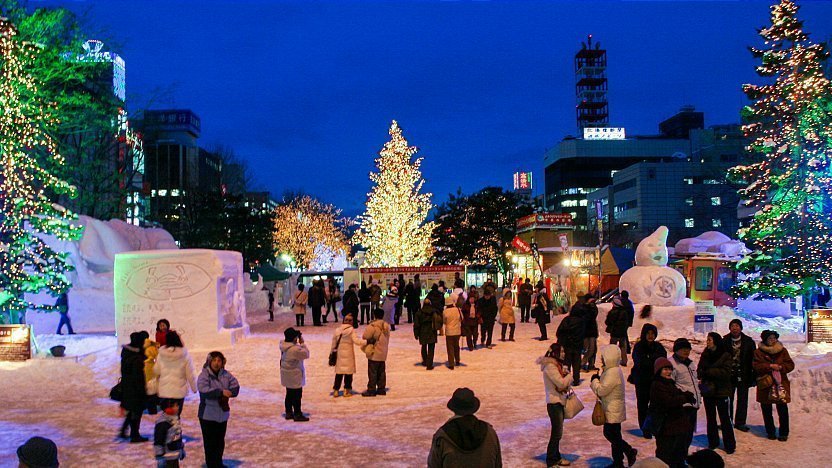
Sapporo Snow Festival (さっぽろ雪まつり・Sapporo Yuki Matsuri)
Sapporo Snow Festival (さっぽろ雪まつり・Sapporo Yuki Matsuri)
Time: February 4-11
Prefecture: Hokkaido
Location: Odori Park, Tsudome, and Susukino
This event, which originated in 1950 with a few snow statues created by high school students in Odori Park, has evolved into a significant and commercialized winter celebration. It now showcases impressive snow and ice sculptures, drawing over two million visitors from both Japan and around the globe. The festival spans three locations: the Odori Site, Susukino Site, and Tsudome Site.

Nagasaki Lantern Matsuri (長崎ランタンフェスティバル)
Nagasaki Lantern Matsuri (長崎ランタンフェスティバル)
Time: Late Jan ~ Early Feb 2024
Prefecture: Nagasaki
Location: Chūō Park, Minato Park
Showcasing an array of over 15,000 lanterns, the event traces its origins to a modest Lunar New Year commemoration. Evolving from Nagasaki's Chinatown in 1994, the celebration transformed into the Nagasaki Lantern Festival. Spanning the initial 15 days of the Chinese lunar new year, the festivities extend across Nagasaki, with prominent locations including Minato Park and Chūō Park serving as the primary venues.

Wakakusa Yamayaki (若草山の山焼き)
Wakakusa Yamayaki (若草山の山焼き)
Time: Late January
Prefecture: Nara
Location: Kōfukuji Temple, Tōdaiji, Kasuga Taisha Shrine
In January, one of Japan's most awe-inspiring spectacles unfolds during the Wasakusa Yamayaki. This event involves setting an entire mountainside in Nara ablaze, accompanied by fireworks bursting behind it. While the exact origins remain unclear, theories suggest it may have stemmed from disputes over temple boundaries, efforts to ward off boars, or even folklore involving ghosts.

Kyoto Toka Ebisu Festival (十日ゑびす大祭)
Kyoto Toka Ebisu Festival (十日ゑびす大祭)
Time: January 8-12
Prefecture: Kyoto
Location: Kyoto Ebisu Jinja
Numerous charms, such as lucky bamboo grass, are available for purchase to enhance your fortune in the upcoming year, attracting crowds of people seeking better luck. The festival is characterized by its noisy and lively atmosphere, as legend has it that the God is a bit hard of hearing. Participants make a ruckus by knocking on wooden boards to grab the God's attention before repeating their prayers. Be prepared for a vibrant and bustling experience.

Osaka Hikari-Renaissance (光の饗宴)
Osaka Hikari-Renaissance (光の饗宴)
Time: December 14 - 25
Prefecture: Osaka
Location: Nakanoshima Island
Nakanoshima Island is the venue for the Osaka Hikari Renaissance illumination event, spanning from Osaka City Hall to the eastern edge of Nakanoshima Park. The event features creative displays that illuminate several historic buildings on the island, adding a touch of enchantment to the surroundings.

Senso-ji Hagoita-Ichi Fair (羽子板市)
Senso-ji Hagoita-Ichi Fair (羽子板市)
Time: Mid December
Prefecture: Tokyo
Location: Senso-ji Temple
Senso-ji, Tokyo's oldest temple located in Asakusa, hosts an annual three-day fair known as Hagoita-Ichi. The fair revolves around the sale of good luck ornamental bats, called hagoita in Japanese.
With roots dating back to the Edo period, this festival unfolds in front of Senso-ji. From December 17th to 19th, spanning from 9:00 am to 9:00 pm, 50 open-air stalls are set up near the main hall of the temple, offering visitors the opportunity to acquire these traditional and symbolic items.

Tokyo Midtown Christmas (東京ミッドタウンMIDTOWN CHRISTMAS)
Tokyo Midtown Christmas (東京ミッドタウンMIDTOWN CHRISTMAS)
Time: November 16 - December 25
Prefecture: Tokyo
Location: Tokyo Midtown
At the festive occasion known as "Midtown Christmas," the trees in the garden situated behind Tokyo Midtown's primary tower are lit up, accompanied by the availability of a paid ice rink operating from 11:00 to 21:00, concluding on February 25, 2024.

Jidai Matsuri (時代祭)
Jidai Matsuri (時代祭)
Time: October 22, the anniversary of the foundation of Kyoto
Location: Kyoto
It consists of a large parade that travels from the Imperial Palace to the Heian Shrine. Jidai Matsuri is Japanese for "Festival of Ages", and the participants are dressed in accurate costumes from almost every period of Japanese history, as well as famous historical figures. There are about 2,000 participants, and it takes two hours to watch the entire procession pass by.
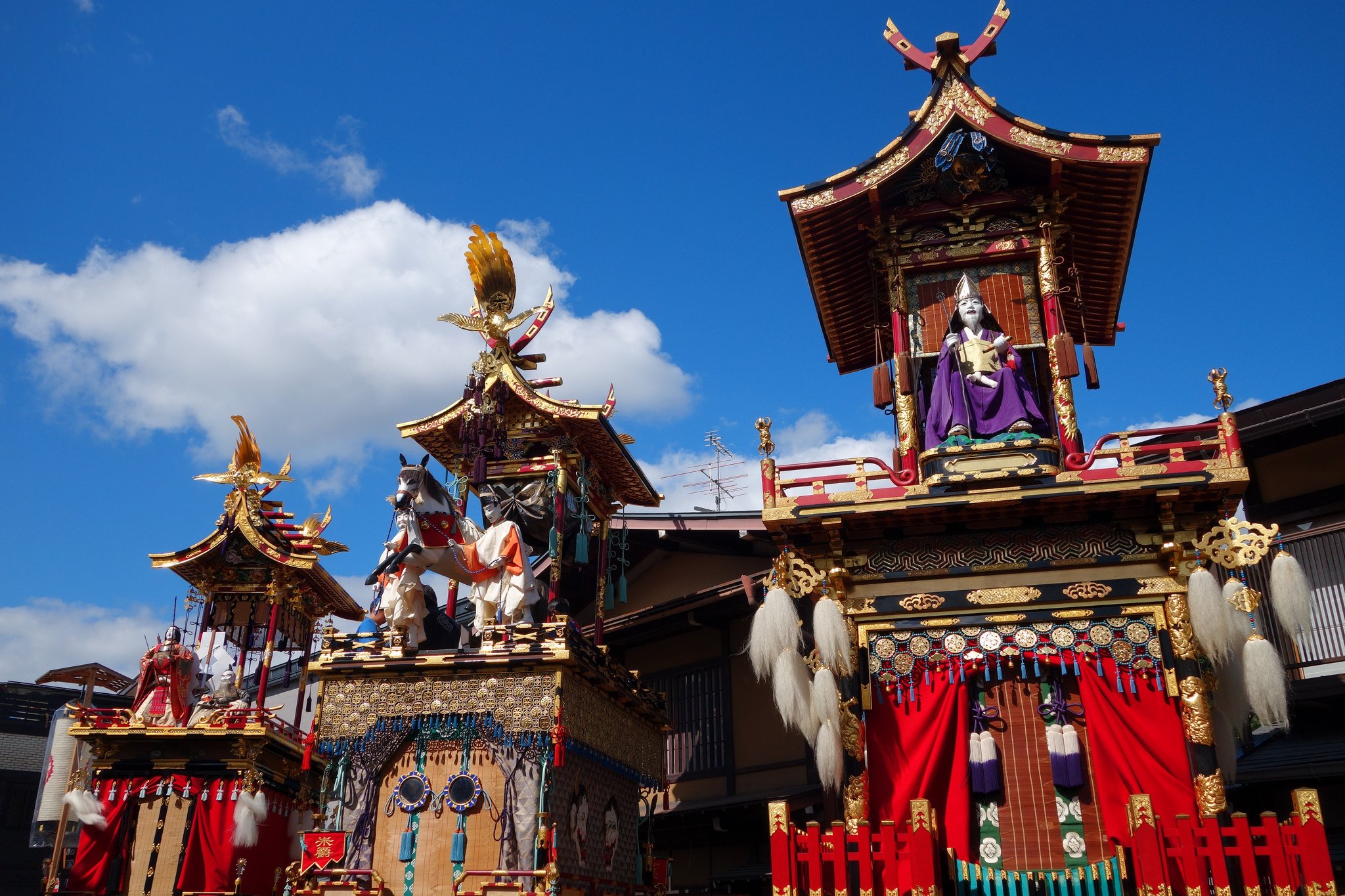
Takayama Festival (高山祭・Takayama Matsuri)ーAutumn Festival
Takayama Festival (高山祭・Takayama Matsuri)ーAutumn Festival
Time: October 9-10
Location: Hachiman Shrine, situated in the northern part of Takayama
It is esteemed as one of Japan's top three beautiful festivals, alongside Kyoto's Gion Matsuri and the Chichibu Yomatsuri. This festival takes place twice a year, in the spring and autumn, within the historic old town of Takayama, drawing a large number of spectators. This festival is also referred to as the Hachiman Festival

Nagasaki Kunchi (長崎くんち)
Nagasaki Kunchi (長崎くんち)
Time: October 7-9
Location: Suwa Shrine in Nagasaki
This festival has a history spanning approximately 400 years and integrates elements from Chinese and Dutch cultures, which have influenced the city's past. The name of the festival is thought to originate from "ku-nichi," signifying the ninth day, which corresponds to the ninth day of the ninth month in the lunar calendar.

Awa Odori (阿波おどり)
Awa Odori (阿波おどり)
Time: August 12-15
Location: Tokushima
The festival is the most renowned among Japan's numerous dance festivals held during the mid-August Obon season. Awa was the previous name for Tokushima Prefecture, and Odori means dance. Thousands of spectators and dancers converge on Tokushima to witness this centuries-old "Fool's Dance." The nickname originates from the lyrics of a popular dance song: "Fools dance and fools watch, if both are fools, you might as well dance."

Kanto Matsuri (竿燈まつり)
Kanto Matsuri (竿燈まつり・ "pole lantern festival") - a Tanabata-related event
Time: August 3-6
Location: Akita City
The festival's main attraction showcases remarkable feats of skill, as performers balance kanto, long bamboo poles adorned with arrays of paper lanterns attached to the ends. Alongside Aomori's Nebuta Festival and Sendai's Tanabata, the Kanto Matsuri is one of the three major festivals of the Tohoku Region.

Nebuta Matsuri (ねぶた祭)
Nebuta Matsuri (ねぶた祭)
Time: August 2-7
Location: Aomori Prefecture
Nebuta and Neputa festivals are summer celebrations tied to Tanabata and are held in various towns across Aomori Prefecture. The most prominent among them is Aomori City's
The festival's main attraction is the daily procession of gigantic lantern floats, accompanied by sizable taiko drums, musicians, and dancers. The Nebuta Matsuri is one of the Tohoku Region's three major festivals, alongside Akita's Kanto Matsuri and Sendai's Tanabata.

Tenjin Festival (天神祭・Tenjin Matsuri)
Tenjin Festival (天神祭・Tenjin Matsuri)
Time: July 24-25
Location: Osaka
Originating in the 10th century, this festival is one of Japan's premier festivals, ranking alongside Kyoto's Gion Matsuri and Tokyo's Kanda Matsuri. The celebration commenced in the 10th century and currently occurs annually on July 24th and 25th. The primary festivities occur on July 25 and feature a terrestrial procession and a river procession, accompanied by a stunning display of fireworks.

Hakata Gion Yamakasa Festival (博多祇園山笠)
Hakata Gion Yamakasa Festival (博多祇園山笠)
Time: July 1-15
Location: Fukuoka
The festival reaches its zenith with a thrilling time trial race in the early morning of July 15. During this race, seven neighborhoods from Fukuoka's Hakata district engage in a competition to push elaborately adorned festival floats along a five-kilometer course through the city.
